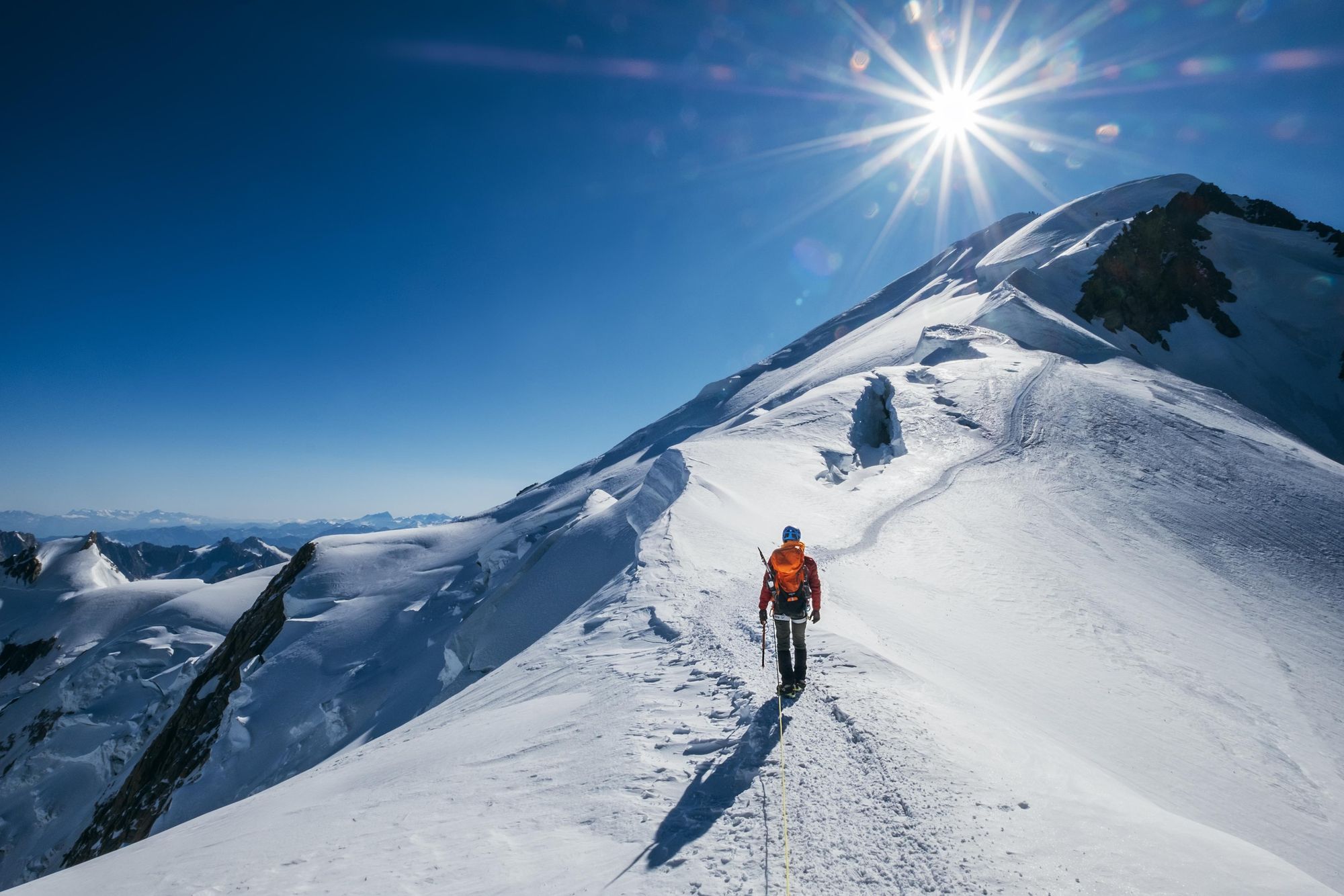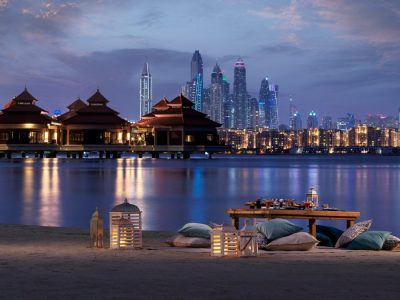December is, famously, the most wonderful time of year, and it’s also one of the most exciting months to travel, as the far reaches of our planet are touched up with a white, snowy blanket.
In much of the world this is the height of winter, and there is something particularly thrilling about travelling as the Christmas buzz takes hold back home. You can follow that feeling to the Arctic forests and frozen waterfalls of Lapland, or learn new winter skills with ice axes in hand and crampons on foot in the mountains of Scotland, Morocco or Nepal, or discover the sauna culture of Estonia with views of snow-covered forests beyond. Chase the northern lights in Iceland or move slowly, snowshoeing through the Carpathians or tracking wolves – looking out for their paw prints in the snowy foothills of Italy’s Abruzzo Mountains.
Follow that feeling to the Arctic forests and frozen waterfalls of Lapland, or learn new winter skills with ice axes in hand and crampons on foot in the mountains of Scotland…
Now, to some people, we’re sure that all of that will sound absolutely dreamy. Us included. However, this is also another option for the best places to travel in December. It involves doing the exact opposite of embracing the winter chill, putting Christmas in front of a stop sign and chasing eternal summer. While your family and friends dig out their hat and gloves, you can keep your shorts, factor 50 and walking poles out and go and explore the world.
Go hiking on the dusty trails of Gran Canaria or Tunisia, or in the lush, green landscapes of Cape Verde or Vietnam. December is a great time to delve into rainforests in Costa Rica and go coast to coast across the country; to hike the volcanoes of Guatemala; to tour Sri Lanka; visit Petra and beyond on the Jordan Trail or go island hopping in the Galapagos.
Active adventure holidays | Much Better Adventures
Join like-minded people on an active, small group, tour.

While those back home are watching reindeer and sad department store adverts, you could be looking at elephants, lions and giraffes in Botswana or Tanzania – even climbing Kilimanjaro.
Generally speaking, December is a great month for global travel, offering something for everyone, around the globe (especially if you like either deep snow or feeling deeply smug about how comparatively warm the weather is). Here, we’ve picked out a range of dreamy destinations to suit folk of all inclinations.
Here’s our guide to the best travel destinations in December – a month of unrivalled excitement.
1. Lapland, Finland
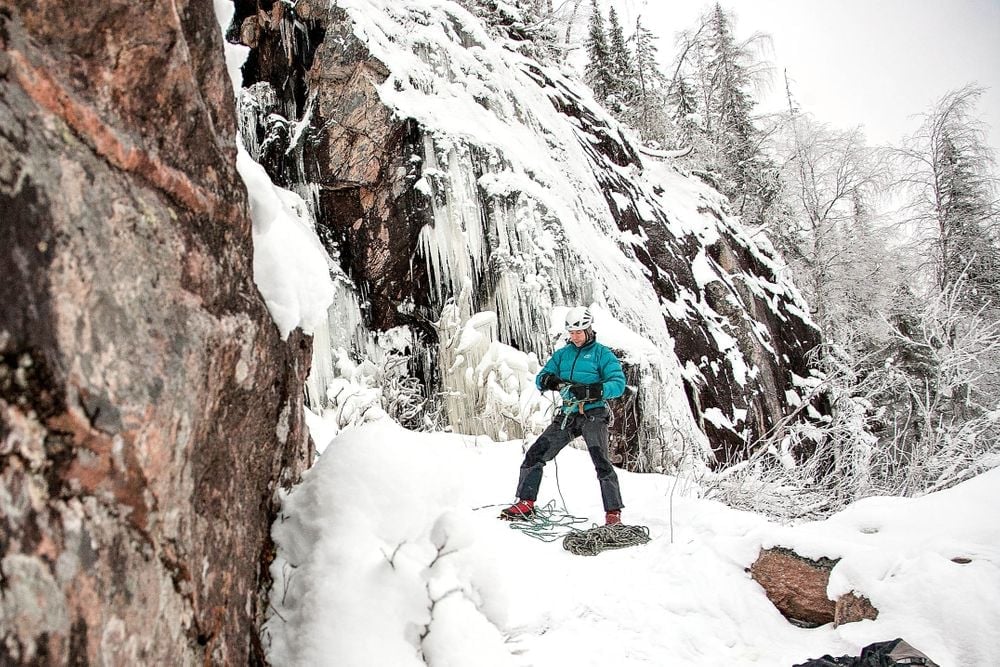
- Season: Winter
- Temperature: 3°C high, -30ºC low
- Time zone: GMT+2
- Currency: Euro
- Best for: Big fans of Santa Claus and ice climbing
Look, you simply can’t talk about the best places to travel to in December without mentioning Lapland, the spiritual home of Christmas. “This isn’t something created for international guests,” says Artturi Kröger, an outdoor guide who lives in Pyhä, in Finnish Lapland. “It’s something that is equally important for locals and families here as well.”
It’s not all about reindeer (though you will see many) or Santa Claus (who you can visit), though. There’s snowshoeing to be done – and frozen waterfalls where you can learn to ice climb.
Ice is alive. It changes everyday. It reflects the temperatures, the humidity. It’s full of highly individual parts; each with their own fingerprint…
“It’s an ongoing dialogue with the ice,” says Artturi. “When you’re rock climbing or climbing indoors, you have a fixed surface, but ice is alive. It changes everyday. It reflects the temperatures, the humidity and it’s full of these highly individual parts; each with their own fingerprint. The shape and texture of the ice, whether you have hard or soft ice, all of this keeps changing move by move.
How to get there? You’ll fly into Rovaniemi Airport (RVN), and then look to board the Skibus to the last stop in Pyhä in Finnish Lapland. Many journeys will involve a change of flights in Oslo.
Ice, Snow and Saunas in Arctic Finland | Much Better Adventures
Book an adventure in Finland. You’ll ice-climb a frozen waterfall, hunt for the northern lights and trek across untouched powder. Eyes open for reindeer, moose and bear.
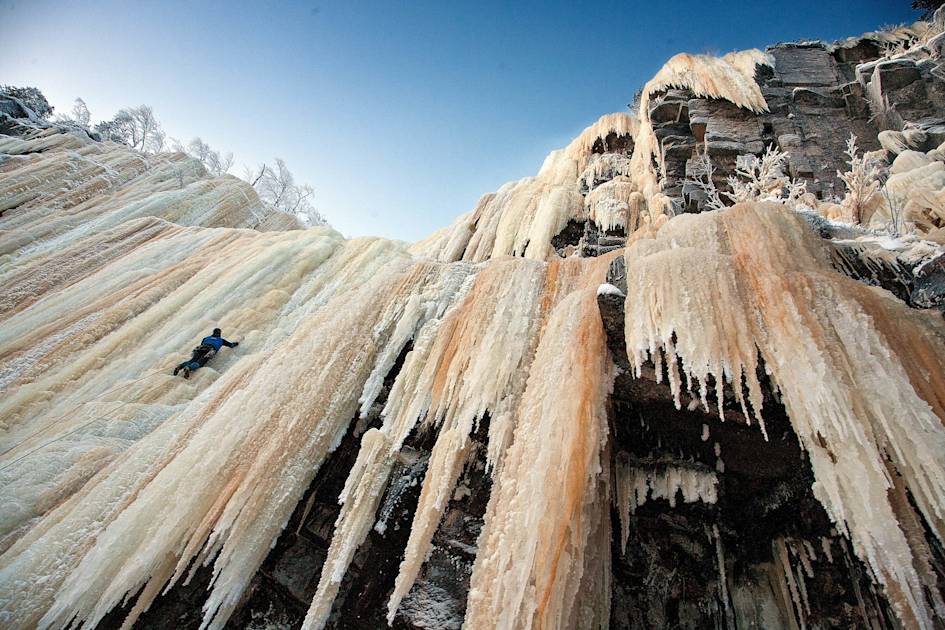
2. Lahemaa National Park, Estonia
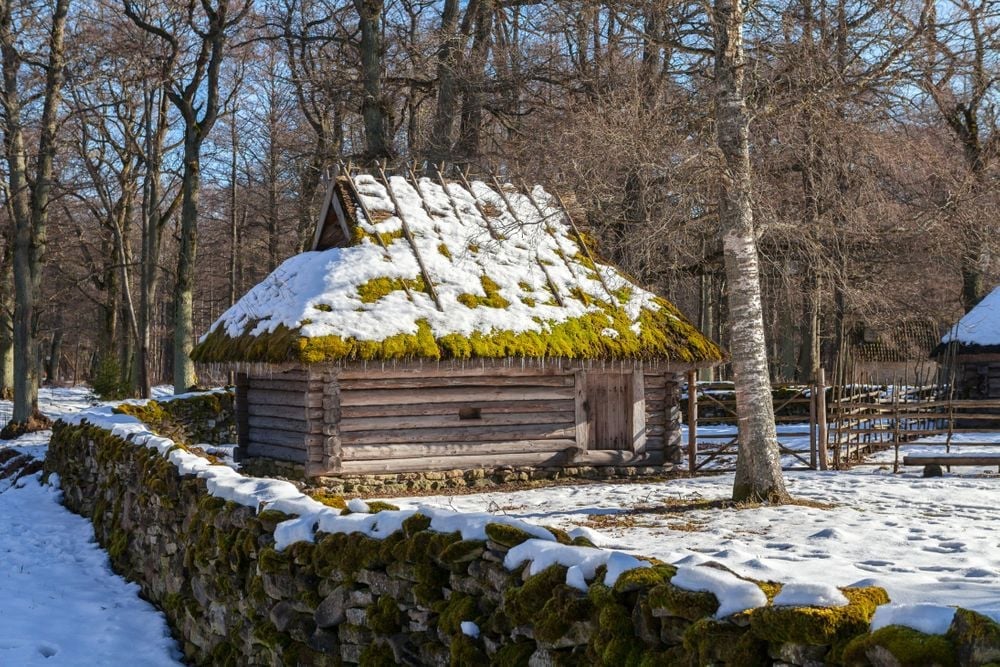
- Season: Winter
- Temperature: 1°C high, -10ºC low
- Time zone: GMT+2
- Currency: Euro
- Best for: Cold lakes and cosy saunas
Finland is perhaps more famous for its saunas than Estonia, but the culture runs deep here – so much so that the art of the smoke sauna in Estonia is actually UNESCO protected. Come and sample those smoke saunas and combine it with a snow-sprinkled winter adventure; sledding, snowshoeing and fat biking through white forests, and channelling your inner Katy Perry to go hot and cold (sorry), mixing freezing cold dips in icy water with steamy saunas, the traditional way.
How to get there? You’ll want to fly into Tallinn, which is the capital of Estonia, and is around a one hour drive from Laheema National Park.
Estonia in Winter: Snowshoeing, Hiking and Sauna Trip | Much Better Adventures
Join a small group tour to hike, sled and fat bike through the snow, stopping off for steamy saunas and icy dips on this Baltic winter adventure.

3. The Abruzzo Mountains, Italy
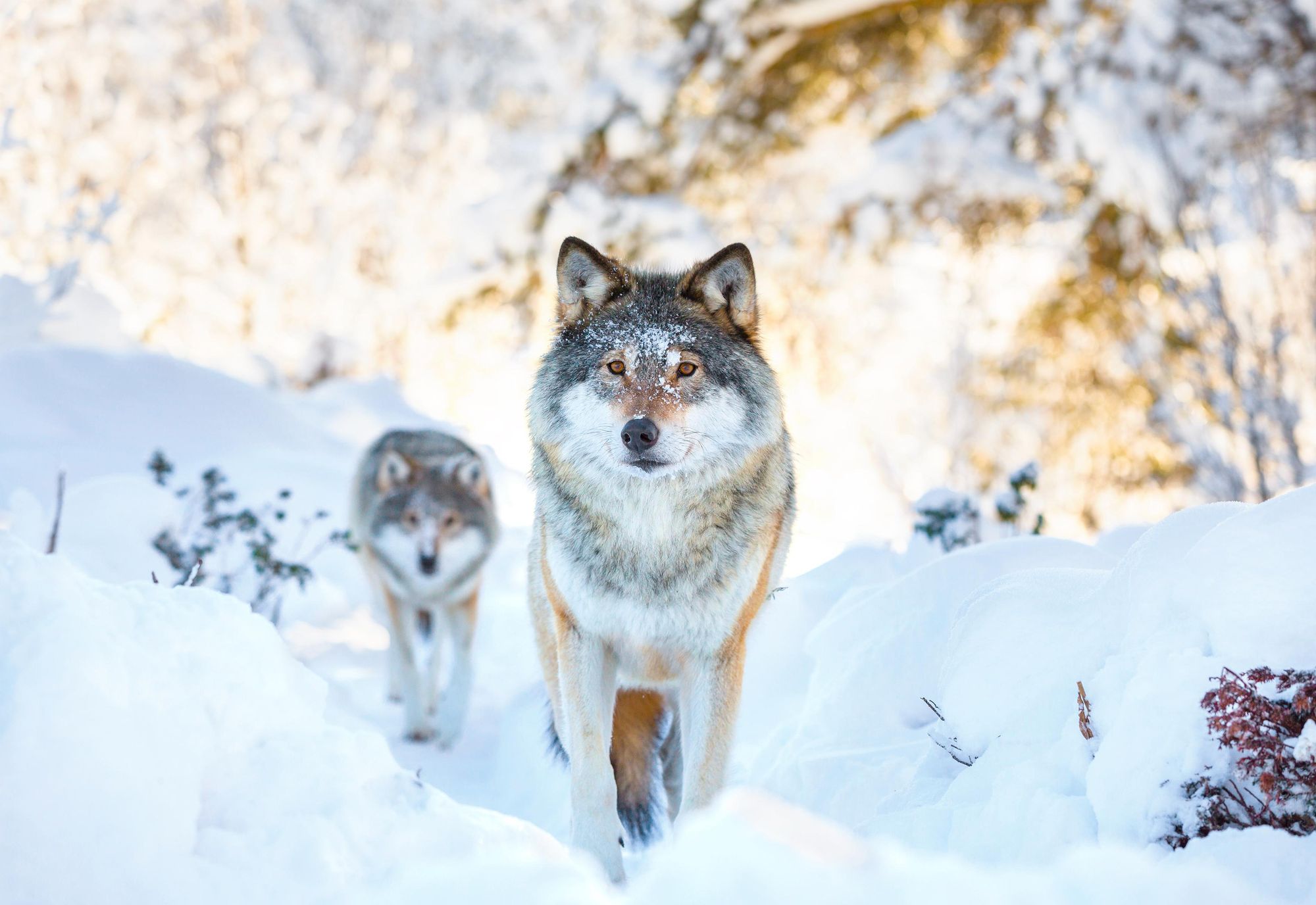
- Season: Winter
- Temperature: 11°C high, 3ºC low
- Time zone: GMT+1
- Currency: Euro
- Best for: Winter wolf tracking
Wolf-tracking in the Abruzzo Mountains, which sit in the central Apennine mountains, only a couple of hours drive from Rome, is a year-round activity. Go in the winter, though, when the hills are covered in snow, and it takes on a particular enchantment, as you look for paw prints in the snow and seek to sight these majestic animals in a winter landscape. We should also note that, owing to everything being white when the snow does come here, it’s actually easier to spot wolves in the winter than it is in summer or autumn, when they blend in with the environment.
Abruzzo is Italy’s garden. “They say the region is the greenest in Europe, because such a big portion of the land is protected by parks or reserves,” says Angela Tavone, of Rewilding Apennines. Her organisation have been working to rewild the area, creating wildlife corridors.
Get lucky, and you might also spot bears. “The bear is a symbol for the territory,” says Umberto Esposito, a guide in the region. ““When you walk in these forests, you might be lucky enough to see some wildlife, but even just having the knowledge about the bears’ presence here, it makes the mountains greater.”
How to get there? For Abruzzo, you’ll want to fly to Rome, which is around two hours away.
Winter Hiking and Wolf Tracking in Italy | Much Better Adventures
Join a rewilding adventure in the Abruzzo Mountains, created in partnership with conservation experts and local wildlife trackers.
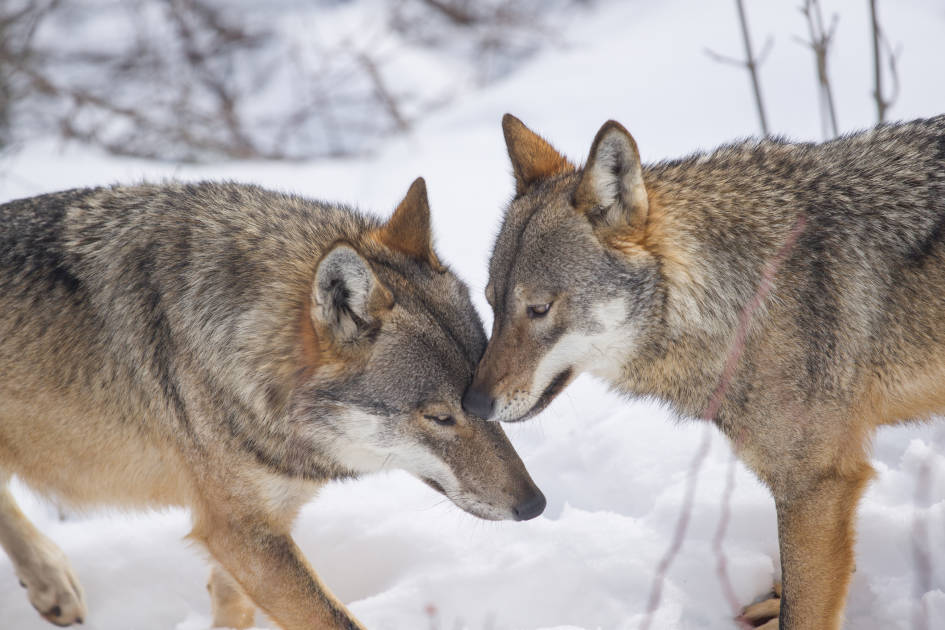
4. Gran Canaria, Spain
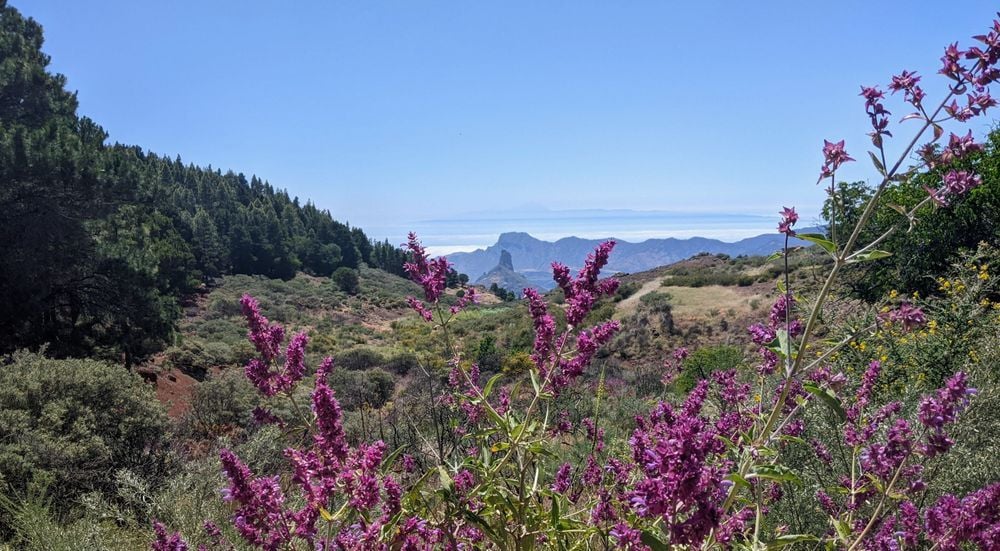
- Season: Winter
- Temperature: 28°C high, 10ºC low
- Time zone: GMT+1
- Currency: Euro
- Best for: Getting hot and dusty in Europe in December
Our first entry which is more focused on sun than snow is out in the Canary Islands. Gran Canaria might be best known as a fly and flop tourist destination, and the all-inclusive resorts, but the island itself is keen to move towards a more sustainable tourism – and the hiking on the island is truly exquisite.
Hike to the summit of the island, Pico de las Nieves, which is up at 1,949m (6,394ft). Walk through the lower hills of Barranco de Guayadeque, an ancient gorge which once houses a river which has now long dried up, and visit the Spanish stonehenge – travelling to the famous Roque Nublo, an 80m monolith which has inspired artists for centuries.
How to get there? Start your trip by flying into Gran Canaria Airport.
Hike The Volcanic Island of Gran Canaria | Much Better Adventures
Join local experts for a challenging hike in the heart of Gran Canaria. Cross craggy mountains, cool pine forests, sunken calderas and sky-skimming ocean views.
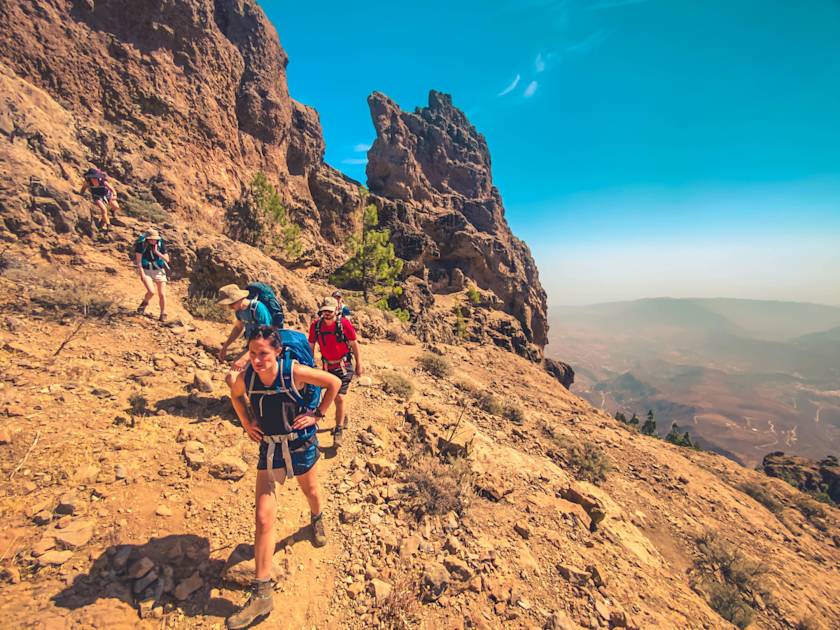
5. Ben Nevis, Scotland
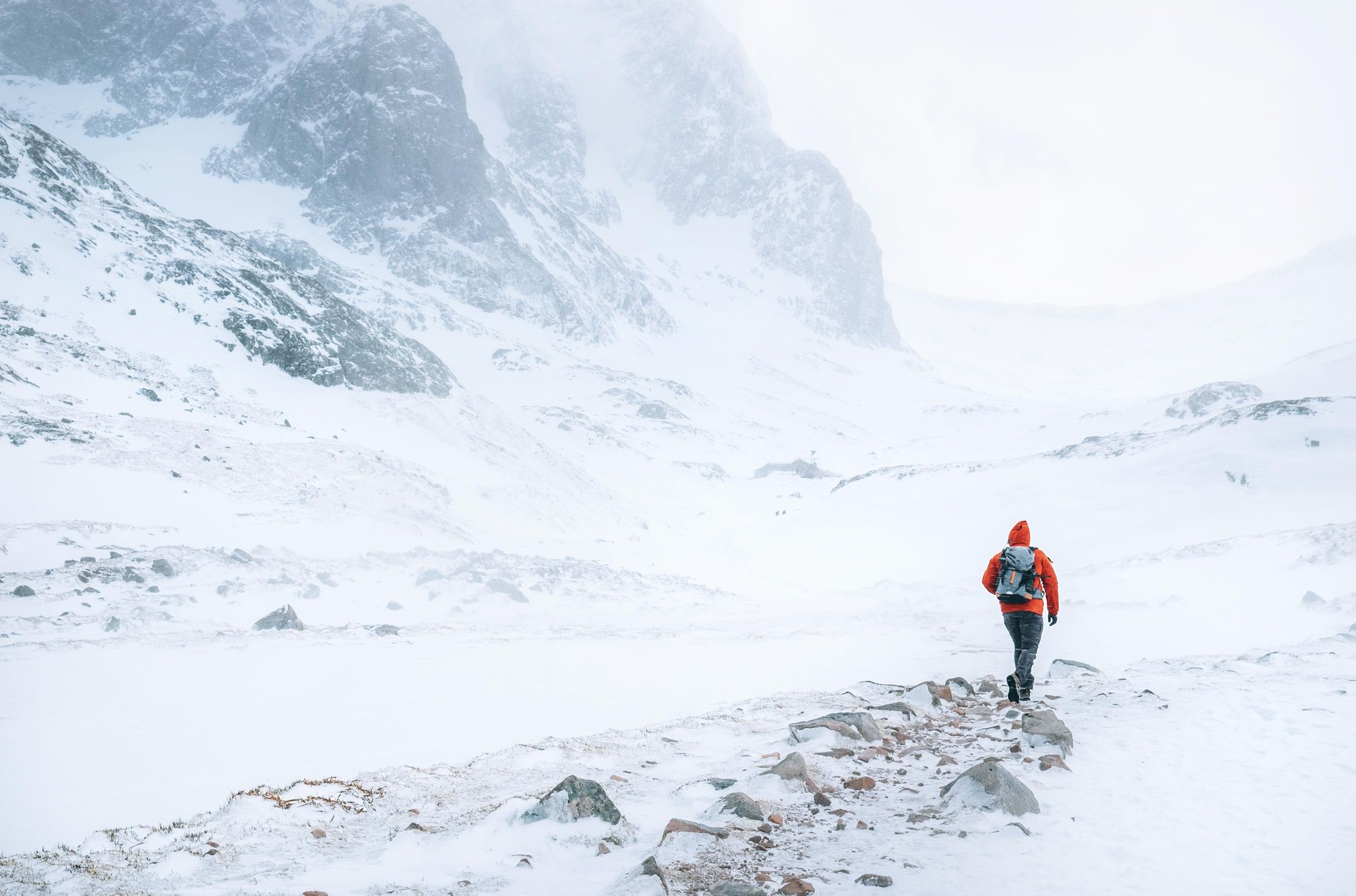
- Season: Winter
- Temperature: 4°C high, 0ºC low (for Fort William)
- Time zone: GMT+1
- Currency: British Pound
- Best for: Learning winter mountaineering skills
The mountains of Scotland look rugged, mean and wild at the best of the times, so it’s safe to say that they wear winter well. Head to Fort William, an outdoor town at the foot of Ben Nevis, and you can experience the beauty of the Highlands by climbing the highest mountain in the UK.
This is an ideal environment in which to head out with an instructor and learn how to use ice axes, crampons, and how to safely move about on the mountain. Then you can ascend the mountain itself – either by the Tourist Track, or if you’ve got a bit more experience and knowhow, on the knife-edge CMD arête. It’s a more daring (and dangerous) route up to the summit – but it’s also one of the best hikes in all of Scotland.
How to get there? You can get a train to Fort William from Glasgow, Edinburgh or London. The nearest major airport to Fort William is Inverness, which is 74 miles (119km) away.
Climb Ben Nevis in Winter | Much Better Adventures
Join a small group with a local guide to learn essential winter mountain skills and summit Ben Nevis. Book your next Much Better Adventure today.

6. The Carpathian Mountains, Romania
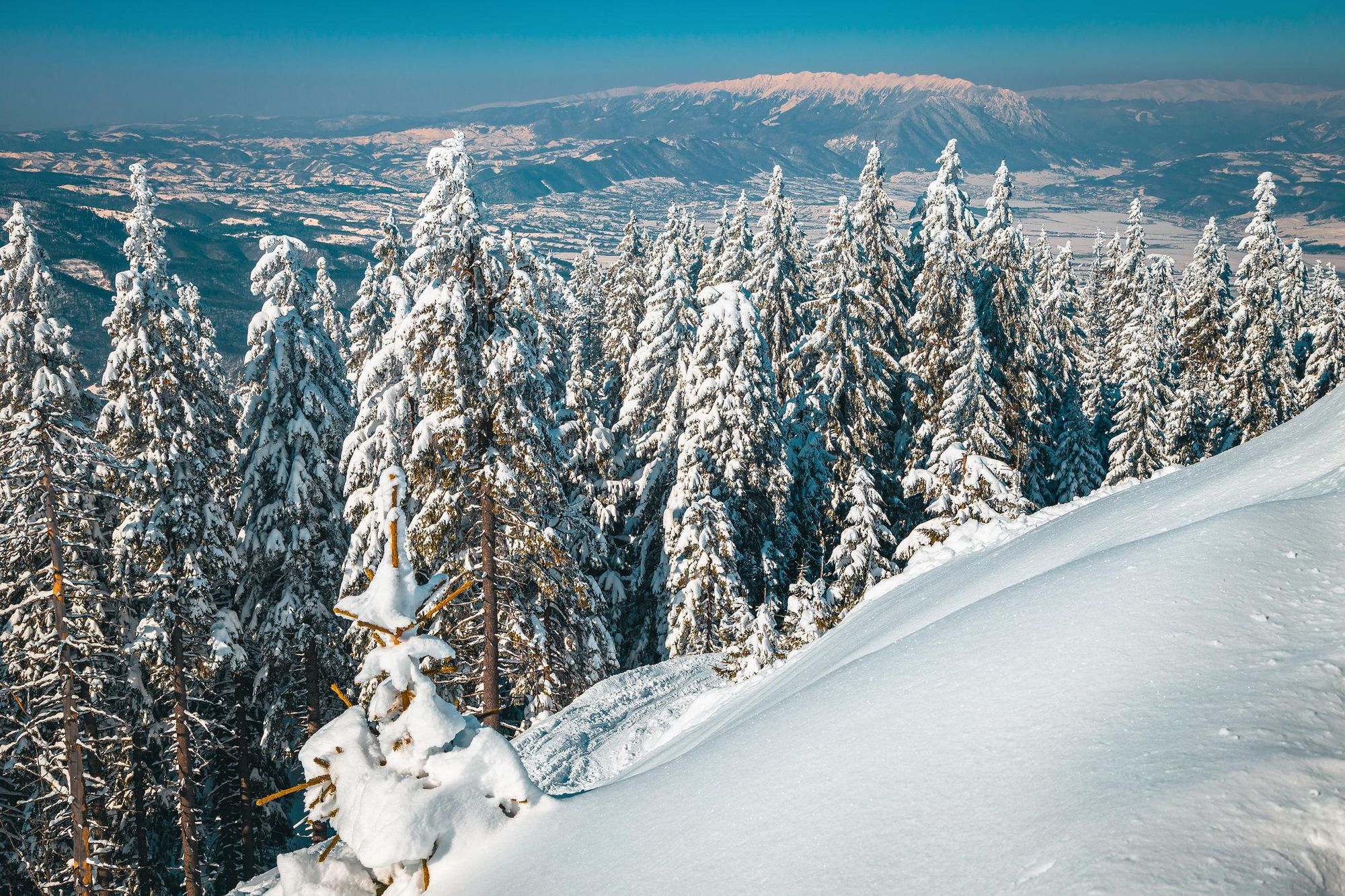
- Season: Winter
- Temperature: 4°C high, -15ºC low
- Time zone: GMT+3
- Currency: Euro
- Best for: Spotting bears and bisons
The Carpathian Mountains in Romania are truly one of Europe’s last great wildernesses – where bears and wolves still rub shoulders (well, perhaps they’re not that friendly) with bison, and ural owls perch on the branches of trees, looking out over a fine example of a true mosaic landscape.
The bison were actually reintroduced as part of a Rewilding Europe project, and have had a huge impact on the landscape; creating room for new flora, benefiting birds, which pick up their fur for use in nests, and frogs, which use their deep footprints in the mud (which fill up with water) as super highways to get around.
Visit in winter and things get chilly here, so this is likely to be another adventure in the snow. In the Apuseni Mountains, you can snowshoe through powder, explore Vârtop Cave, where Neanderthals once trod, and delve into a spectacular network of karstic caverns and warm up at the end of the day with hearty Carpathian food in remote mountain hamlets. Yum.
How to get there? Cluj-Napoca Airport is the starting point for many adventures in the Carpathians, although it’s several hours drive to the west to actually reach the mountains.
Hike Romania’s Carpathian Mountains in Winter | Much Better Adventures
Book a locally guided adventure snowshoeing through untouched powder and descend into the ancient Vârtop Cave, Romania’s deepest cavern.
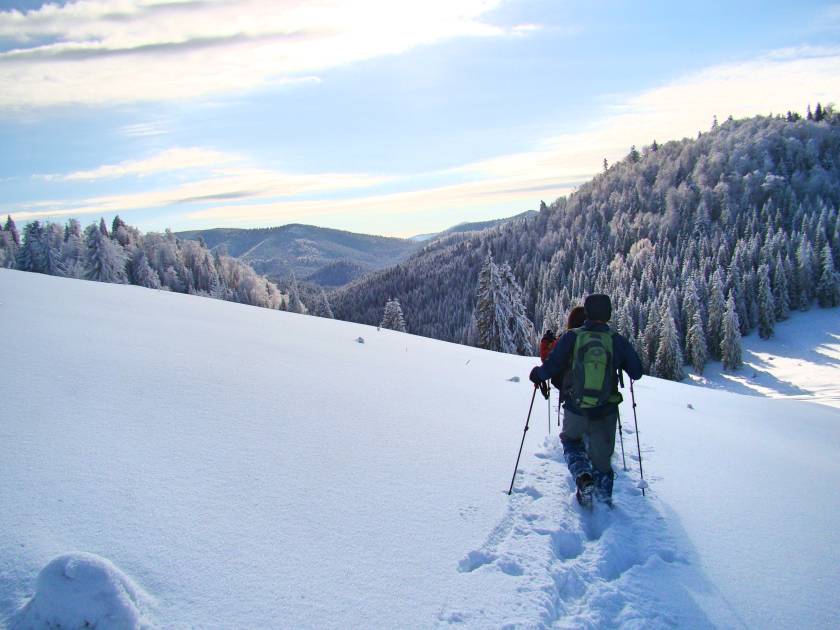
7. Sólheimajökull, Iceland
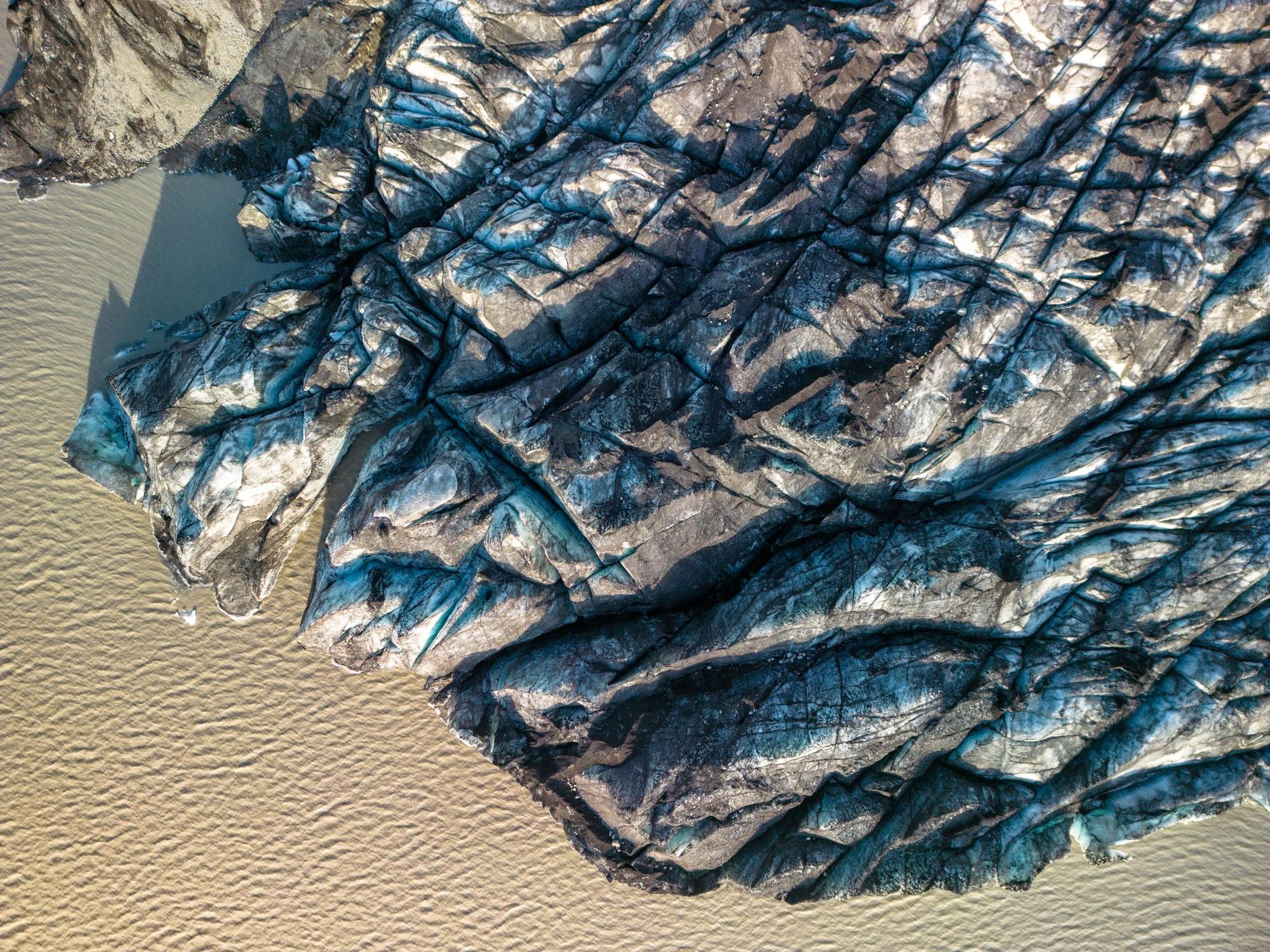
- Season: Winter
- Temperature: 4°C high, -8ºC low
- Time zone: GMT+0
- Currency: Icelandic Króna
- Best for: Spotting the northern lights
There’s a reason Iceland has become such a coveted adventure location. The island is dotted about with frankly remarkably geological features and remarkable natural monuments, from the huge Sólheimajökul glacier to enormous waterfalls, geysers and hot springs. There won’t be an awful lot hot about visiting Iceland in winter though (the clue is in the name).
While it may be cold, though, visiting in winter allows you to embark a series of spectacular hikes interspersed with thunderous waterfalls. You’ll travel along tectonic plates and through steaming geothermal valleys to bathe – and yes, you can still bathe in the natural hot springs in winter.
It’s crampons on to cross the Sólheimajökull glacier, and you can also try your hand at ice climbing before the night sets in, and you look to the skies to try and find the aurora borealis.
How to get there? Adventures in Iceland usually start at either Keflavik Airport, which is the main international airport for the country.
Hike Iceland’s Golden Circle and South Coast in Winter | Much Better Adventures
Join this small group tour to hike to hot springs, visit icy waterfalls and gaze at the aurora with an expert local guide, bunking down in cosy farmstays.
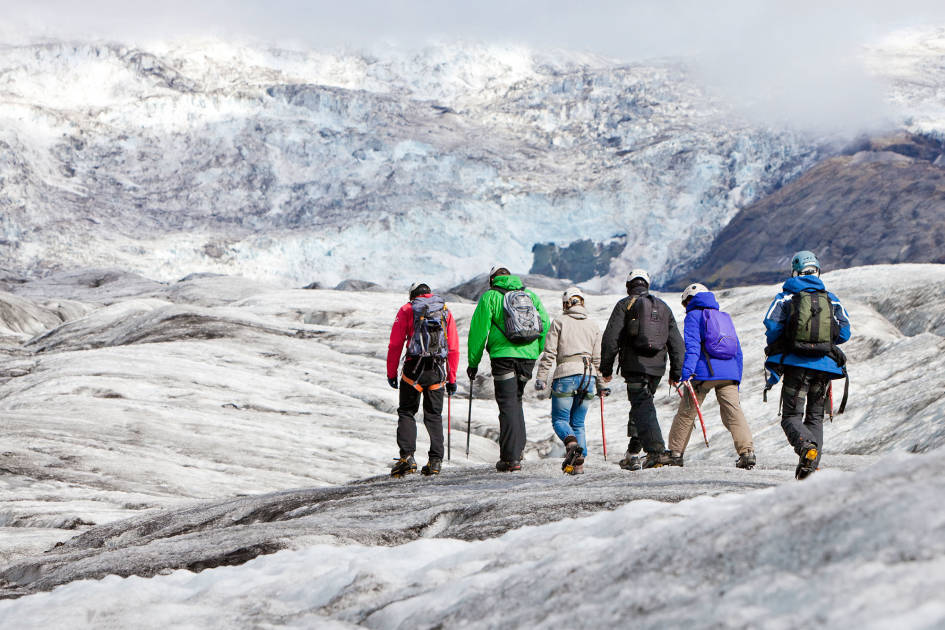
8. The Julian Alps, Slovenia
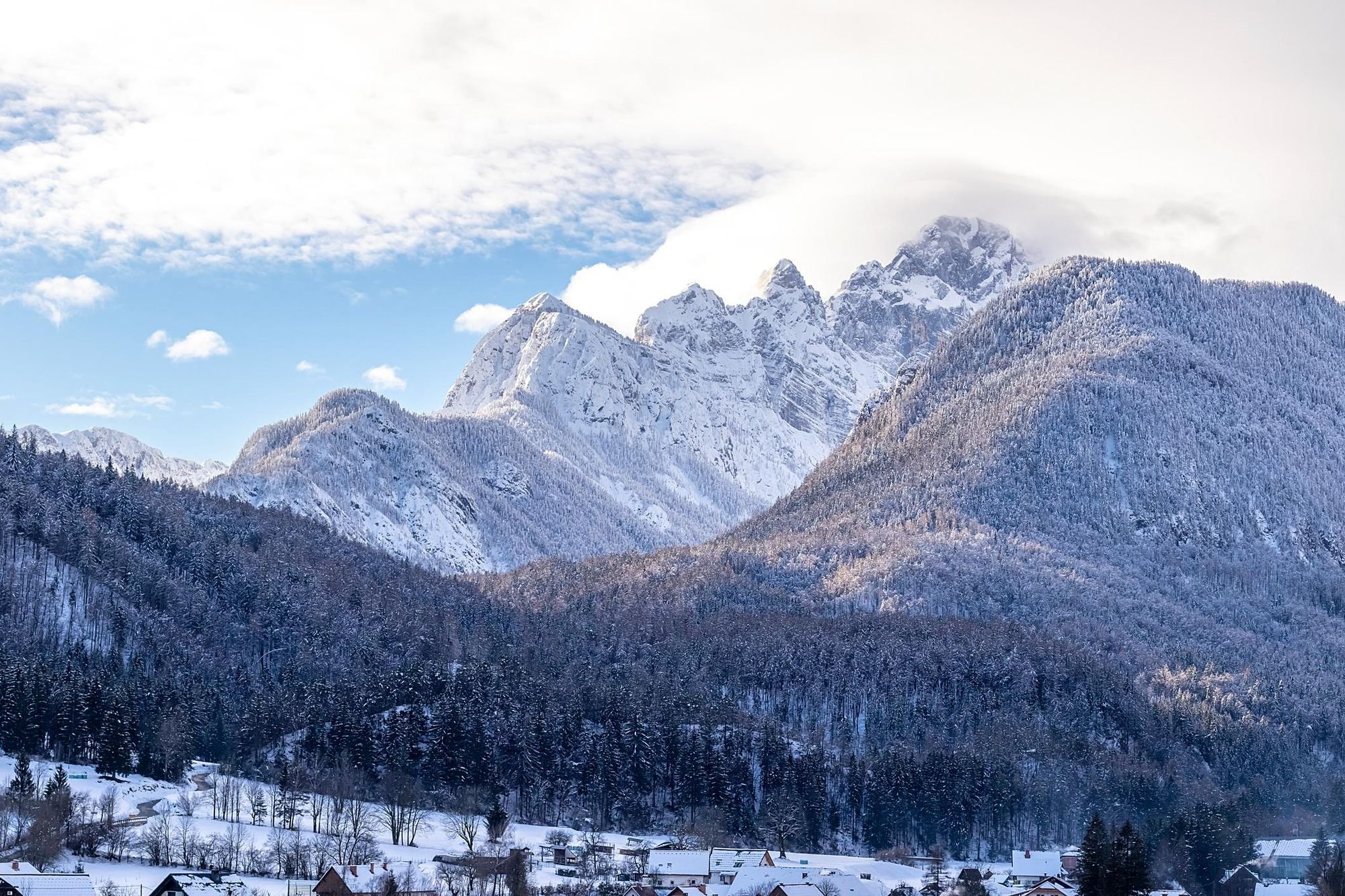
- Season: Winter
- Temperature: 6°C high, -1ºC low (for Ljubljana)
- Time zone: GMT+1
- Currency: Euro
- Best for: Lesser known Alps, with all the beauty
The Julian Alps in Slovenia have all the beauty of the French or Swiss Alps, but with the added tranquillity and peace of a natural beauty spot that, well, not an awful lot of people visit. So think of the same jagged peaks and serrated ridgelines you get in the rest of the Alps, plus the pastoral farmlands and wooden huts and chalets around them, but even more calming and immersive. Come winter, this is truer than ever, as snow covers the mountains, allowing for multi-day snowshoe journeys across the Julian Alps – and which can even cross into Italy.
You can kayak in the flooded tunnels and caves 700m below Mount Peca. And before you leave, we’d recommend visiting both Bled and Bohinj, two sublime mountain towns in Slovenia. There’s a plethora of well trodden walking trails in both which are dreamy in winter.
How to get there? For a Slovenian adventure, you’ll want to fly into the capital of Ljubljana.
Hike and Kayak Slovenia in Winter | Much Better Adventures
Join expert guides to snowshoe through the Julian Alps across Slovenia and Italy, a winter wonderland of frozen lakes, snowy forests and warming saunas.
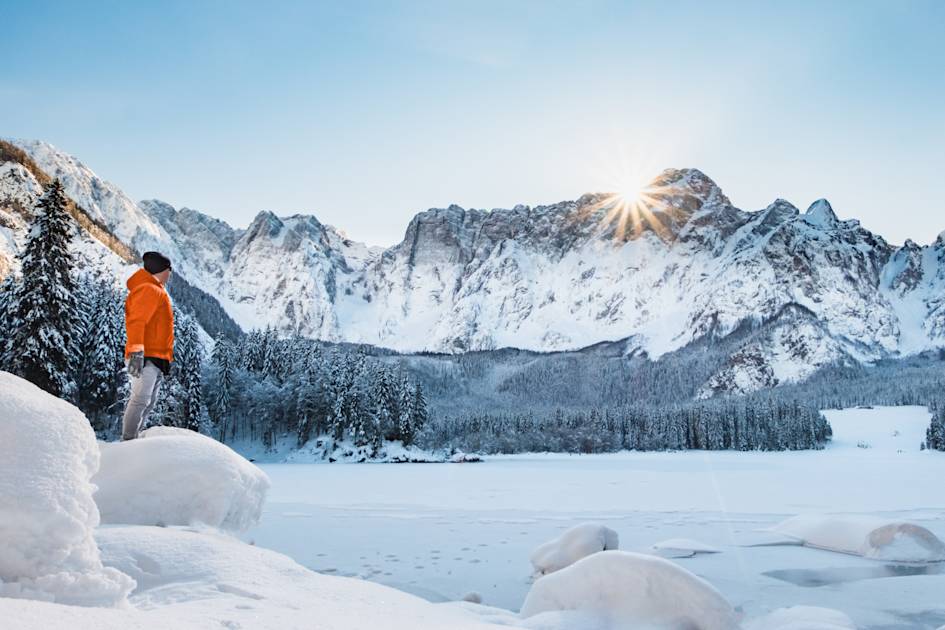
9. The Galapagos Islands, Ecuador
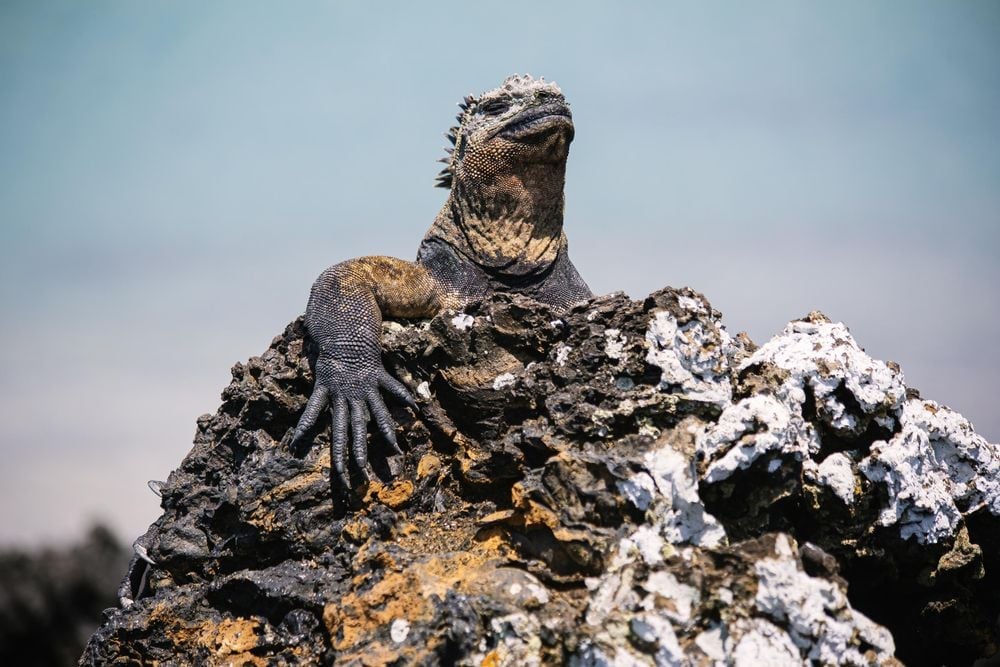
- Season: Rainy season
- Temperature: 32°C high, 27ºC low
- Time zone: GMT-5
- Currency: US Dollar
- Best for: Marine wildlife
The Galapagos Islands are a year-round destination for wildlife lovers. “You’ll see wildlife even if you don’t do any specific activity,” says Henry Sisa, a Quito-based guide who has led tours in Galapagos. The most famous residents are perhaps the giant tortoises. Visit in December and you’ll be there when the giant tortoise eggs start to hatch. Get very lucky and you might just see a tiny giant tortoise (which we’re aware sounds like a paradox, but is very cute).
December is the beginning of the mating season for iguanas and so they are particularly colourful (though also a little aggressive) during this period, and this is the last month of the year that the Waved Albatross stays in the Galapagos, before they head off for the summer season.
How to get there? The Galapagos Islands are reached from Ecuador, with most people flying in from the capital of Ecuador, Quito, to Baltra Island in the Galapagos.
Island Hopping Adventure in the Galapagos | Much Better Adventures
Join local experts for a Galapagos Islands adventure. Hike, bike and snorkel the unique archipelago on an action-packed adventure immersed in the natural world.
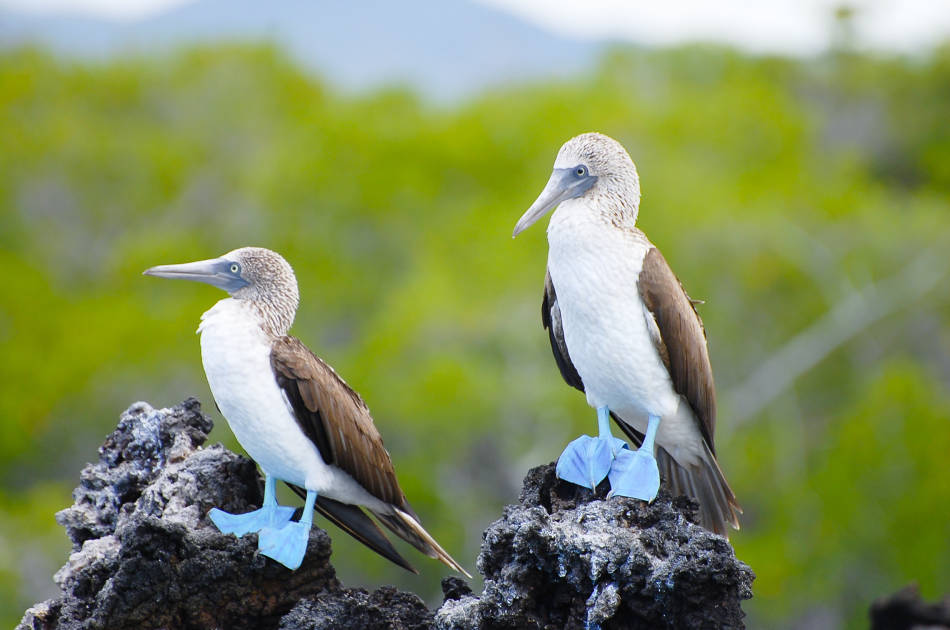
10. Sinai Desert, Egypt
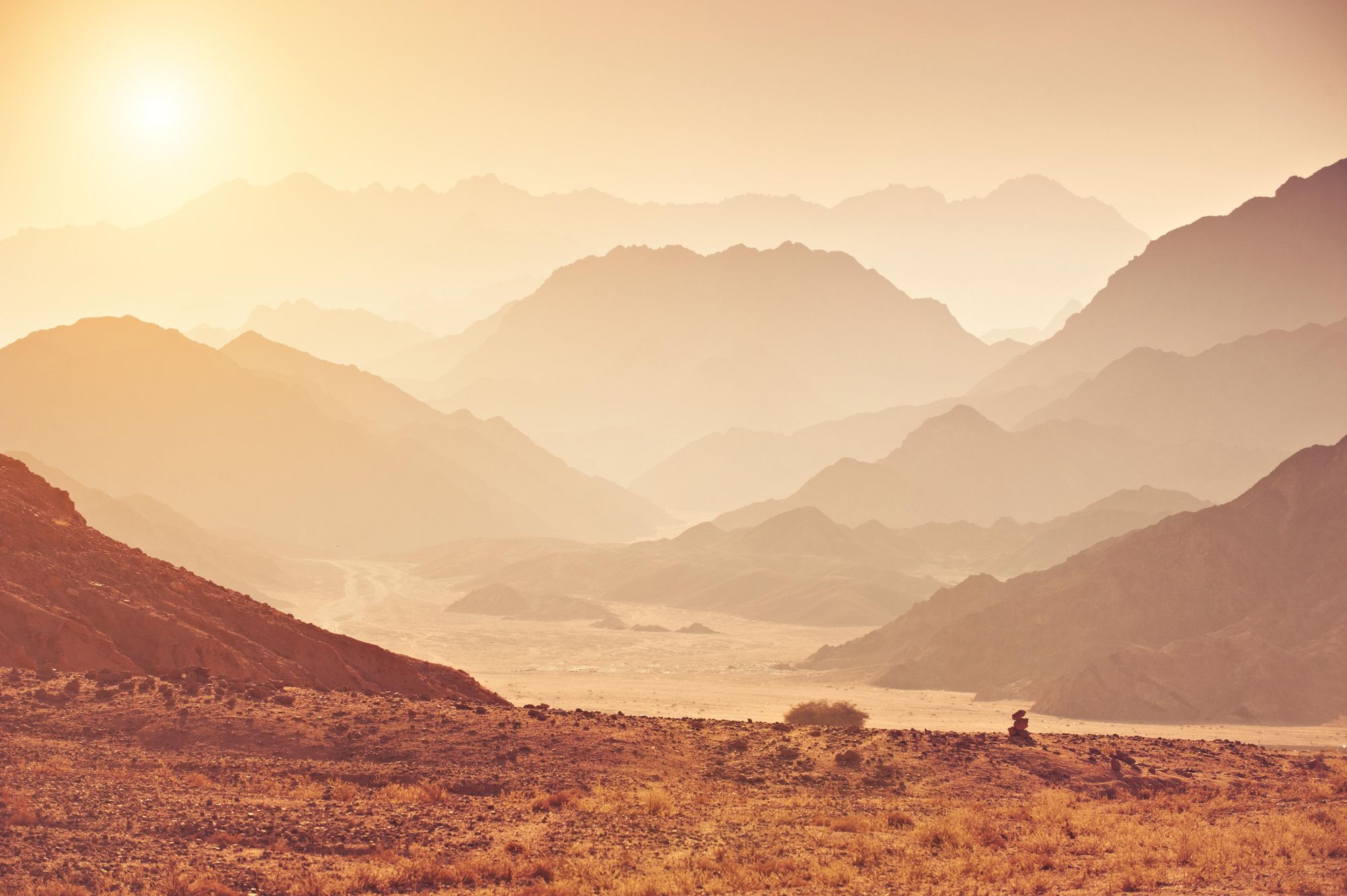
- Season: Winter
- Temperature: 23°C high, 12ºC low (for Sharm El Sheikh)
- Time zone: GMT+3
- Currency: Egyptian Pound
- Best for: Winter scuba
Visiting Egypt during December is a great idea by those who are put off by the huge temperatures that hit the country at the height of summer. This is winter time even in Egypt, and while that doesn’t mean the same thing it means in much of the world – you’re still going to be enjoying temperatures around 20°C – here, it creates conditions which are ideal for adventure.
Hike through the desert landscape via wadis dotted with boulders, discovering remote ravines and lush oases. Scramble your way up to the jagged summit of Jebel Um Shomer (2587m) for spectacular vistas across arid peaks and the Red Sea – and learn the traditional desert way of life from nomadic Bedouins, cooking over fire and sleeping out, under the Milky Way.
How to get there? To reach the Sinai Desert, fly into Sharm El Sheikh International Airport.
Trek Through Egypt’s Sinai Desert | Much Better Adventures
Join a small group of like-minded adventurers to follow ancient trails with Bedouin nomads as your guides, for a wild expedition through the Sinai Desert.
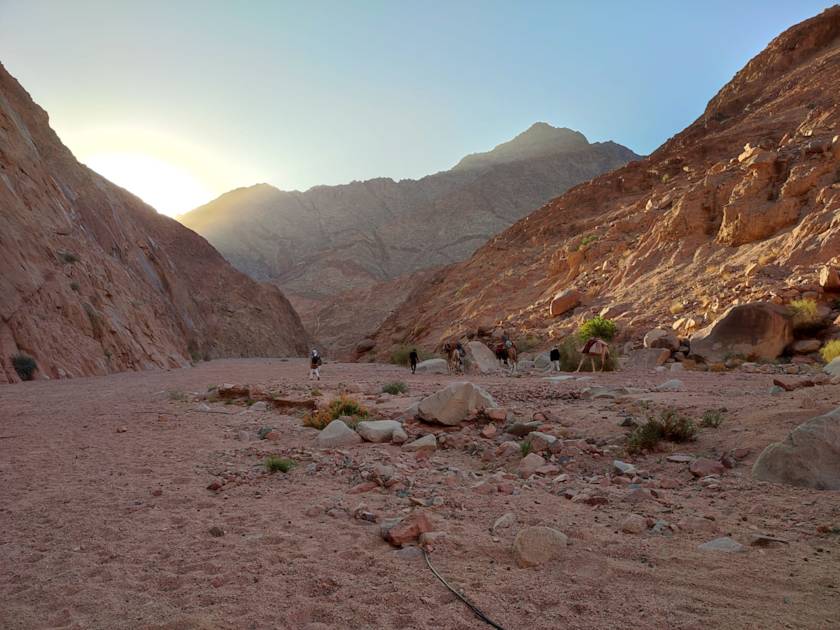
11. Okavango Delta, Botswana
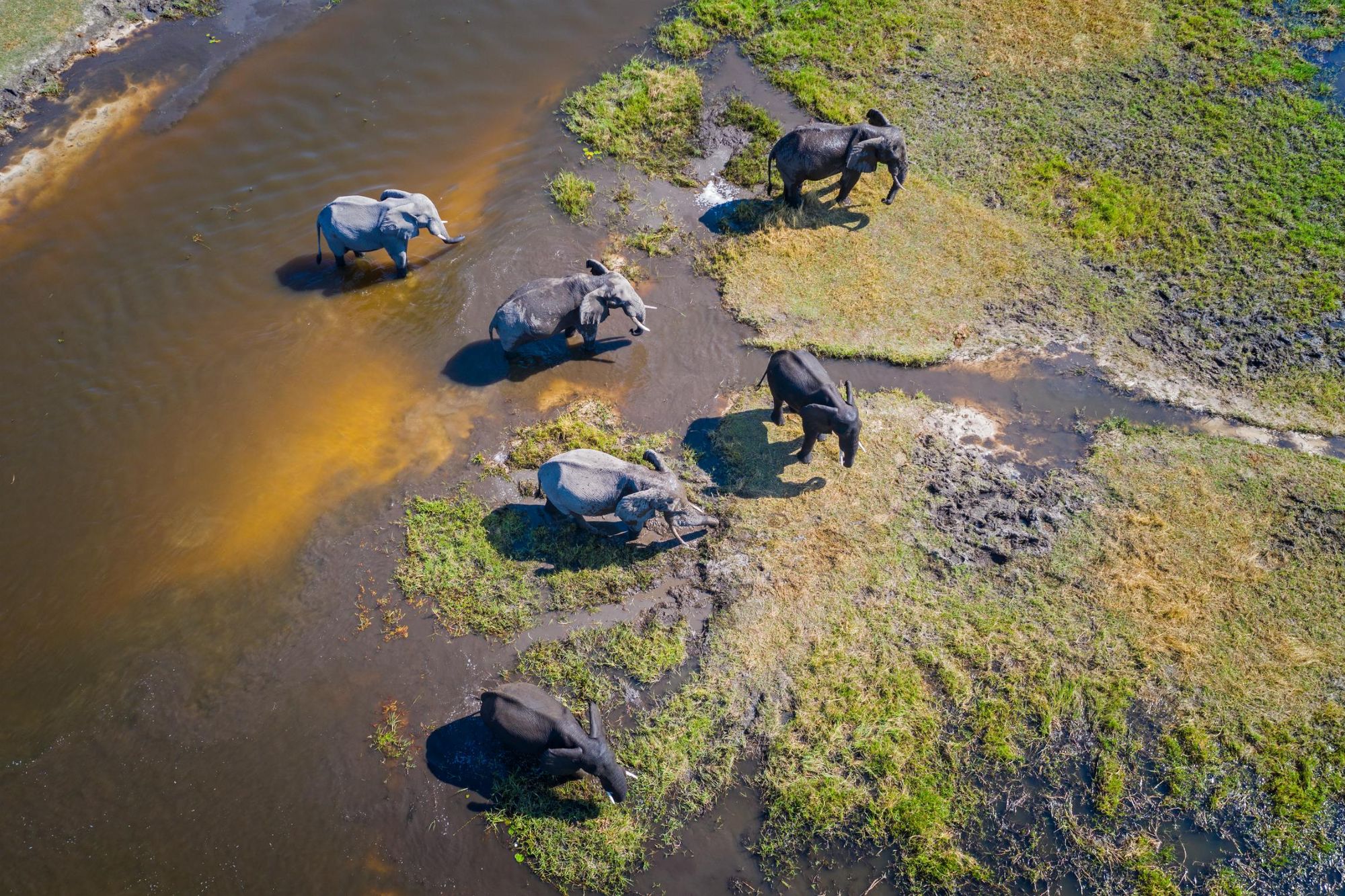
- Season: Rainy season
- Temperature: 33°C high, 19ºC low
- Time zone: GMT+2
- Currency: Botswana Pula
- Best for: A once-in-a-lifetime wildlife trip
The Okavango Delta is a thriving wetland bursting with wildlife. In total, it’s home to over 400 species of bird and around 200 species of mammals – from African elephants, hippopotamus, rhinoceros and wild dogs to lions, crocodiles and leopards. The concentration of animals across the delta makes this one of the best places to watch wildlife in the world.
If you’ve got your heart set on safari, don’t rule out doing so in December. It’s extra adventurous here at this time of year, as the rainy season kicks in and afternoon thunderstorms become a regularity. Visiting during these times usually means adapting your schedule so you avoid those thunderstorms, but while a lot is said about the great African sunsets, these thunderstorms truly are a sight to behold as well. Naturally, all that water also brings out new flora, and greenery emerges. You may spot young calves (of varying species) taking their first steps – and this is the off-season, so there will be less tourists and locals are more relaxed.
How to get there? Windhoek International Airport is the gateway to adventures combining Namibia and Botswana. The nearest international airport to Okavango Delta is actually Maun.
Trek Through Egypt’s Sinai Desert | Much Better Adventures
Join a small group of like-minded adventurers to follow ancient trails with Bedouin nomads as your guides, for a wild expedition through the Sinai Desert.

12. Mount Kilimanjaro, Tanzania
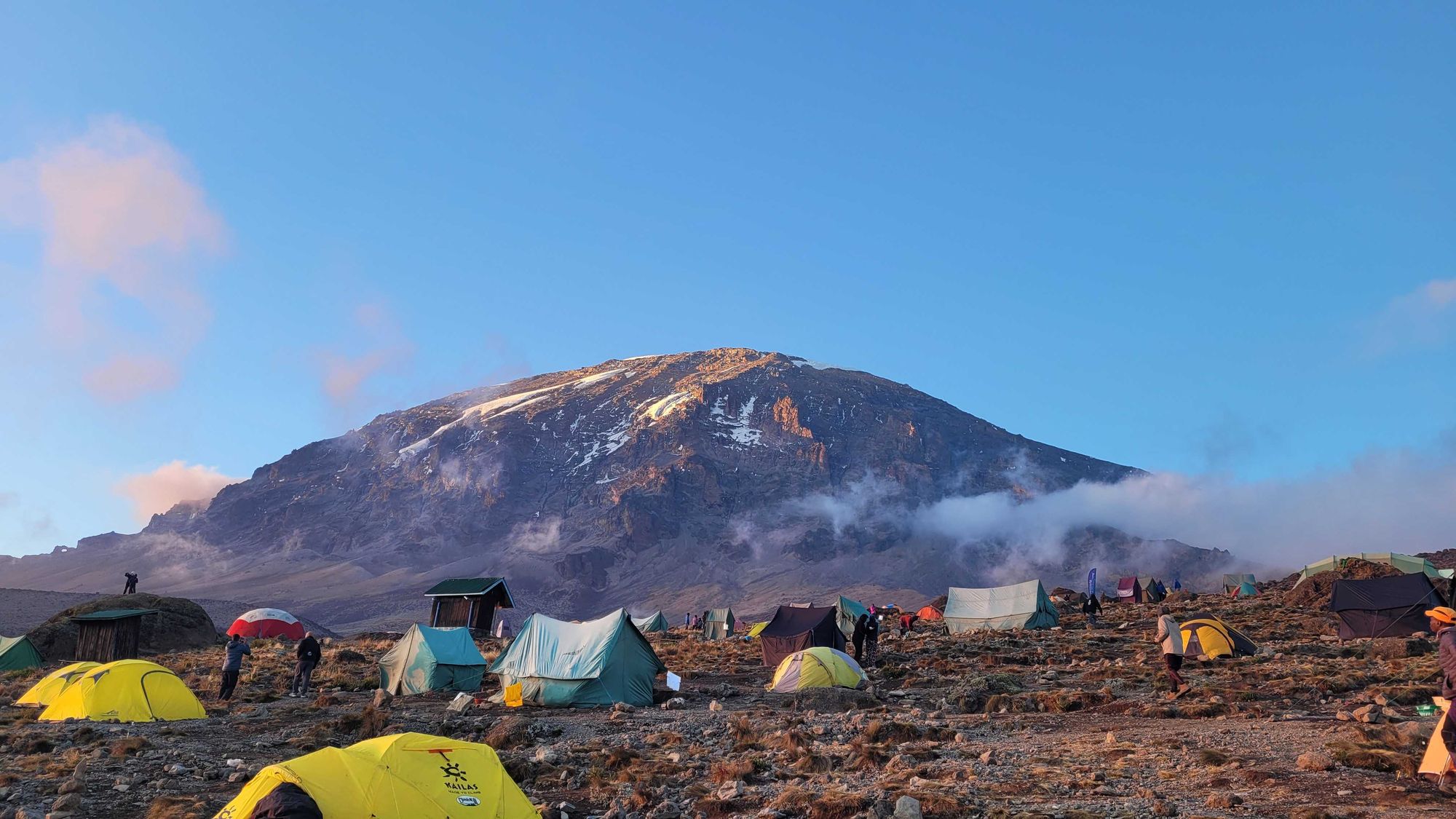
- Season: Summer
- Temperature: 32°C high, 18ºC low (for base of Kilimanjaro)
- Time zone: GMT+3
- Currency: Tanzanian Shilling
- Best for: Big summit baggers
Mount Kilimanjaro (5,895m/19,340ft) is the highest mountain in all of Africa, and one of the world’s great seven summits – all of which is to say that the pull of climbing it is obvious.
The area surrounding Kili is also beautiful, though, and makes for great safari. Take to Amboseli National Park, 30 miles away, and you can see leopards, lions, cheetahs, buffalo, elephants and so much more. December is part of a small rainy season in Tanzania. Trails can be a bit slippier, and higher up on the mountain, you can expect temperatures below zero. The benefits are that the trails are nowhere near as busy as at other times of year, and also – after those rain clouds have emptied? You can expect clear skies, with far-reaching views out over all of Tanzania.
How to get there? You can fly into Kilimanjaro airport, which serves Moshi, Marangu and Arusha. Or you can fly to Nairobi or Julius Nyerere International Airport in Dar es Salaam.
Climb Kilimanjaro via the Lemosho Route in 10 Days | Much Better Adventures
The Lemosho route has one of the highest summit success rates for climbing Kilimanjaro. Book your trip today! Small groups. Expert guides.

13. The Atlas Mountains, Morocco
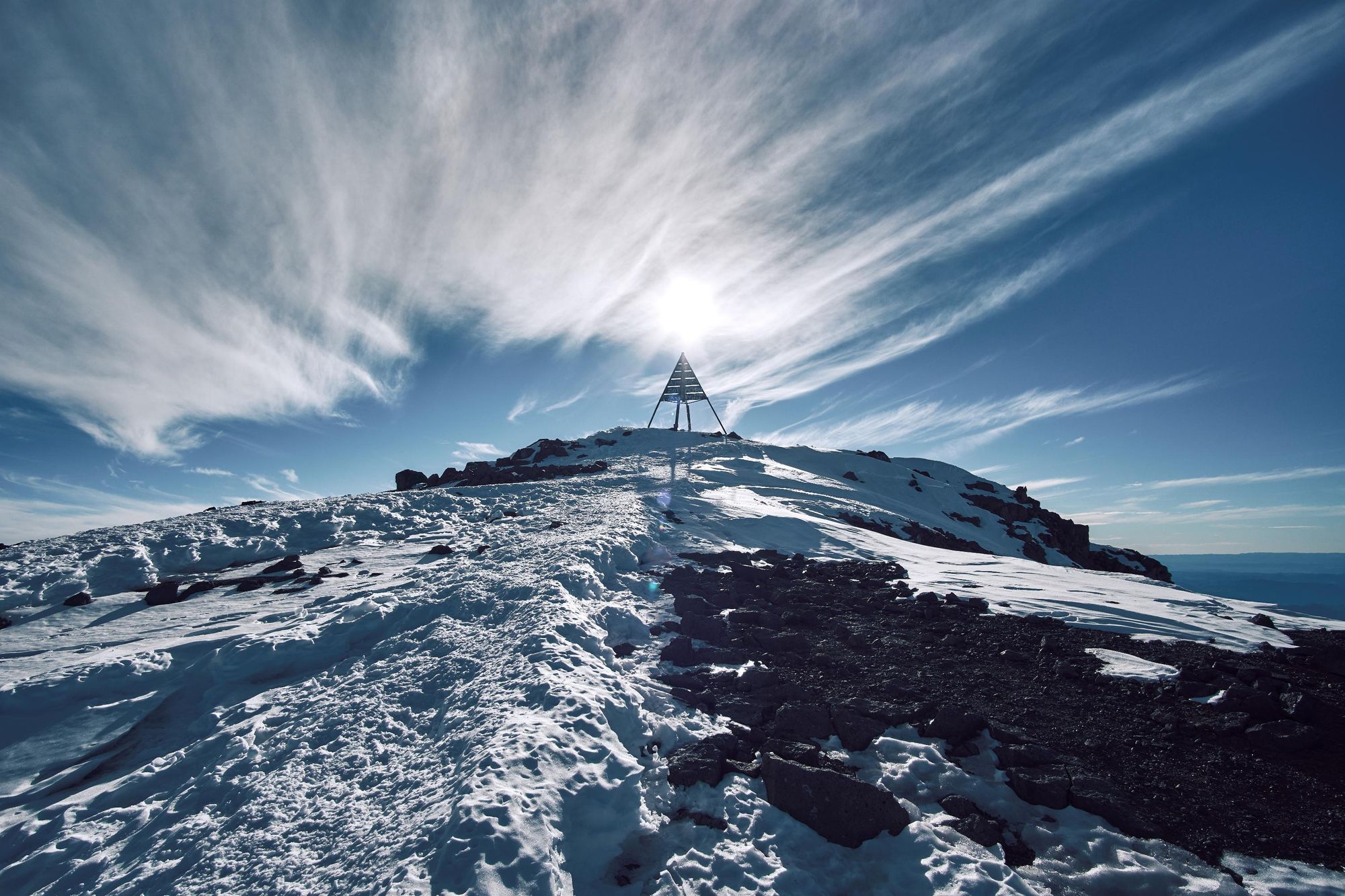
- Season: Winter
- Temperature: 20°C high, 5ºC low (for Imlil)
- Time zone: GMT+1
- Currency: Moroccan Dirham
- Best for: A big weekend adventure
Mount Toubkal 4,167m (13,665ft) is the tallest mountain not just in Morocco, but also in all of North Africa. An ascent of the mountain is a two-day affair; with the first day taking you up to a mountain refuge, and the following day taking you on to the summit, then all the way back down.
If you’re looking for Atlas Mountain tips beyond Toubkal, there are miles and miles of dusty, winding trails through these spectacular mountains. Other notable peaks in the area including the 4,089m Mt Ouanoukrim and Ras (4083m).
The benefits of climbing in December are that you avoid the intense heat present here at other times of the year, but do note that especially high up it will be cold. There may even be snow on Mount Toubkal in December, so you’ll need to chat to your guide before going to make sure you bring the right gear and have the right experience to visit the Atlas Mountains in December.
How to get there? Most people visiting the Atlas Mountains first fly into Marrakech Airport.
Climb Mount Toubkal: The Winter Edition | Much Better Adventures
Don your crampons for a serious adventure and trek your way up the mighty Mount Toubkal in the height of winter. Expert mountain guides will lead the way.
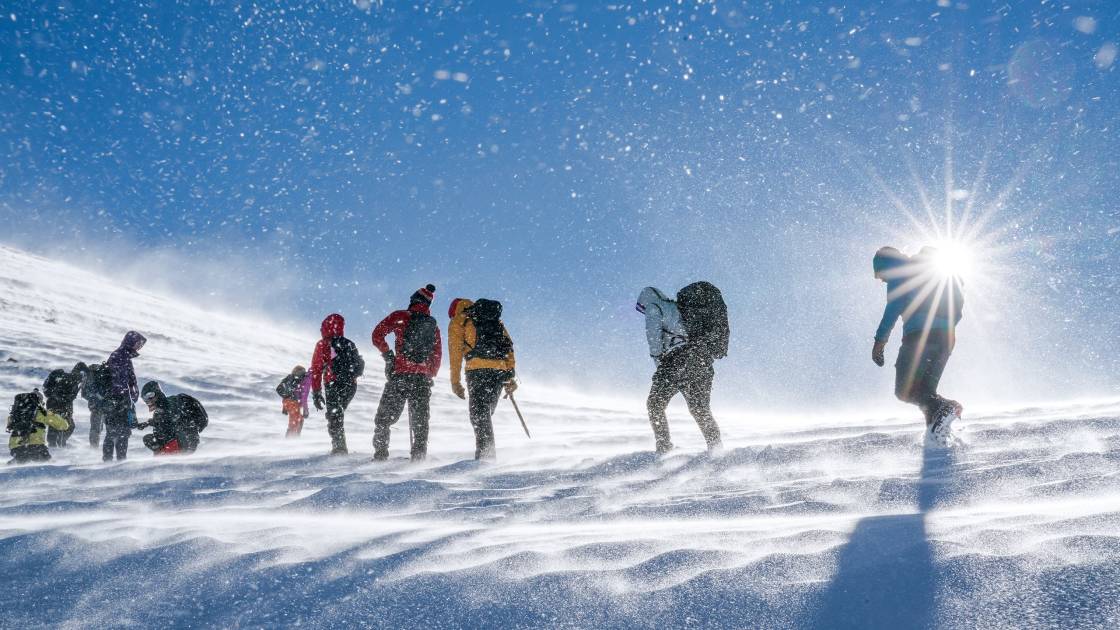
14. Cape Verde
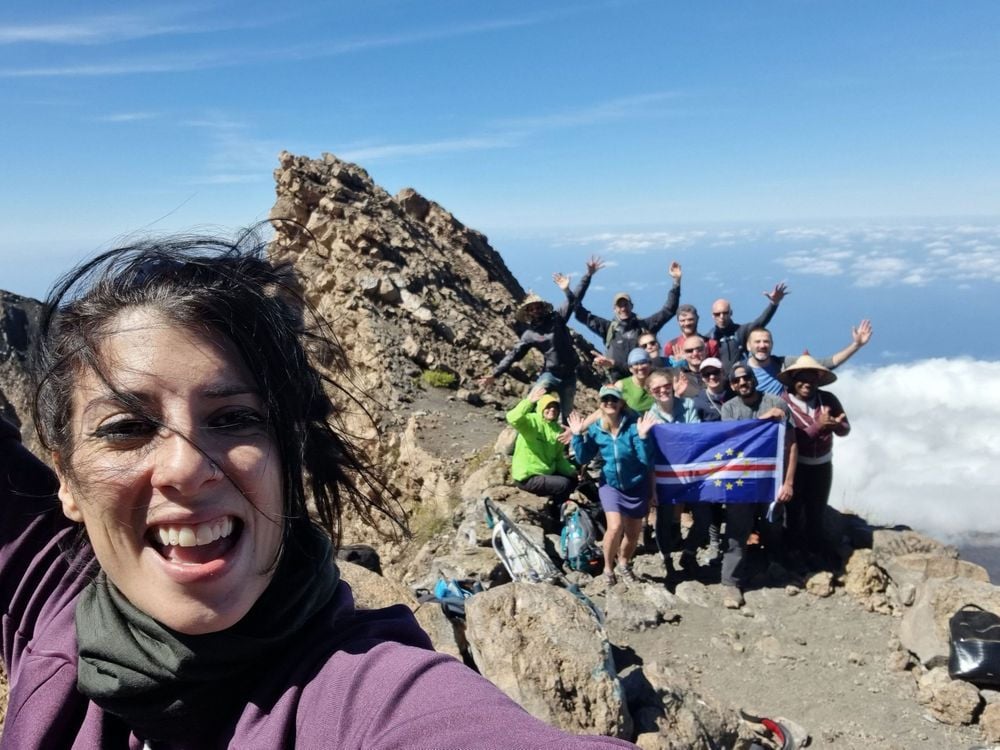
- Season: Summer
- Temperature: 27°C high, 21ºC low
- Time zone: GMT-1
- Currency: Cape Verdean Escudo
- Best for: A December island adventure
Discover summer on the island of Cape Verde, which if you’re not familiar, is out in the Atlantic Ocean, roughly 350 miles (570km) from the African mainland. The island is a place of tranquillity, of culture and music, of African-Portuguese culture and untouched, wild geography.
While there you’ll experience the lush Calabaceira Valley, the Serra Malagueta Natural Park, and you’ll trek ash-covered slopes to reach the top of Pico do Fogo, which at 2,829m (9,281m) is the island’s highest point. “As we made our way up it revealed itself amongst the rocks and ash along the volcano’s flank,” Chris Hawley recalled, in his feature on Cape Verde for the Much Better Adventures Magazine. “A few hours later we made it to the top of Pico do Fogo – the highest point in Cape Verde. There were stunning views of the crater itself, but also back down into the caldera, with the clouds below us hiding some of the path we had taken just the day before.”
How to get there? Begin your adventure in Cape Verde at Praia Nelson Mandela International Airport (RAI).
Adventure Hiking in Cape Verde | Much Better Adventures
Join a small group of adventurous souls to hit the trails of Santiago and Fogo islands and soak up the archipelago’s inimitable African-Portuguese culture.
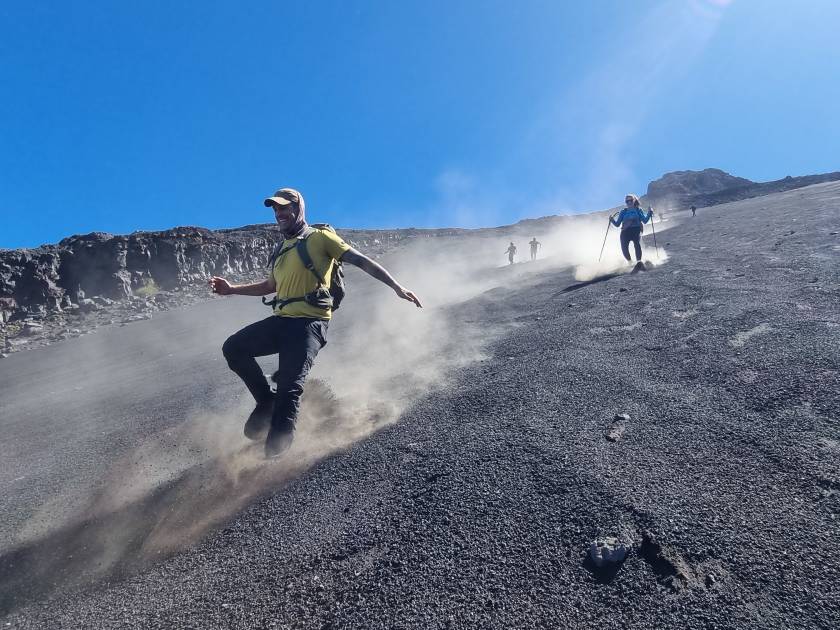
15. The Maldives
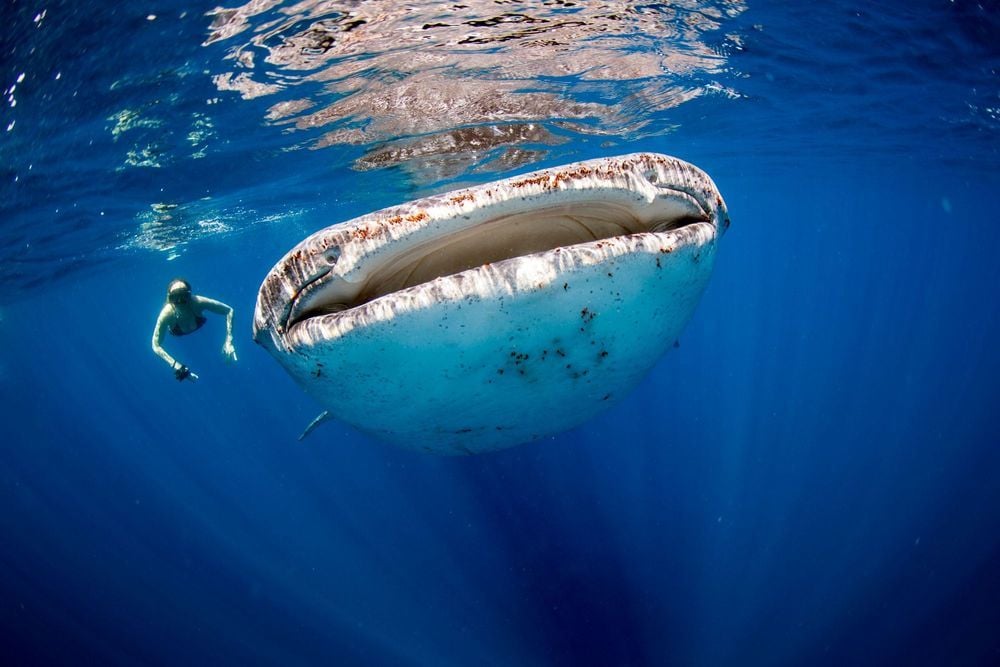
- Season: Summer
- Temperature: 29°C high, 25ºC low
- Time zone: GMT+5
- Currency: Maldivian Rufiyaa
- Best for: Ultimate winter warmth
The Maldives is another destination which is primarily known for ‘beach and booze’ type holidays – but in the case of the Maldives, this doesn’t come close to telling the full story.
Ignore the all-inclusive resorts on the Maldives and instead team up with local guides to explore marine environments teeming with life, from huge whale sharks (known as the gentle giants of the ocean) to manta rays, stingrays, black tip reef sharks and more. Kayak and SUP around islands which look like stock images of paradise and participate in marine conservation projects which are helping to protect this remarkable biodiversity and improve coral health.
How to get there? Fly into Male Velana International Airport in the Maldives.
Island Hopping Adventure in the Real Maldives | Much Better Adventures
Relax into authentic island life on this easygoing adventure in South Ari Atoll, paddling in tropical waters away from the resorts with a local guide.

16. Torres del Paine, Chilean Patagonia
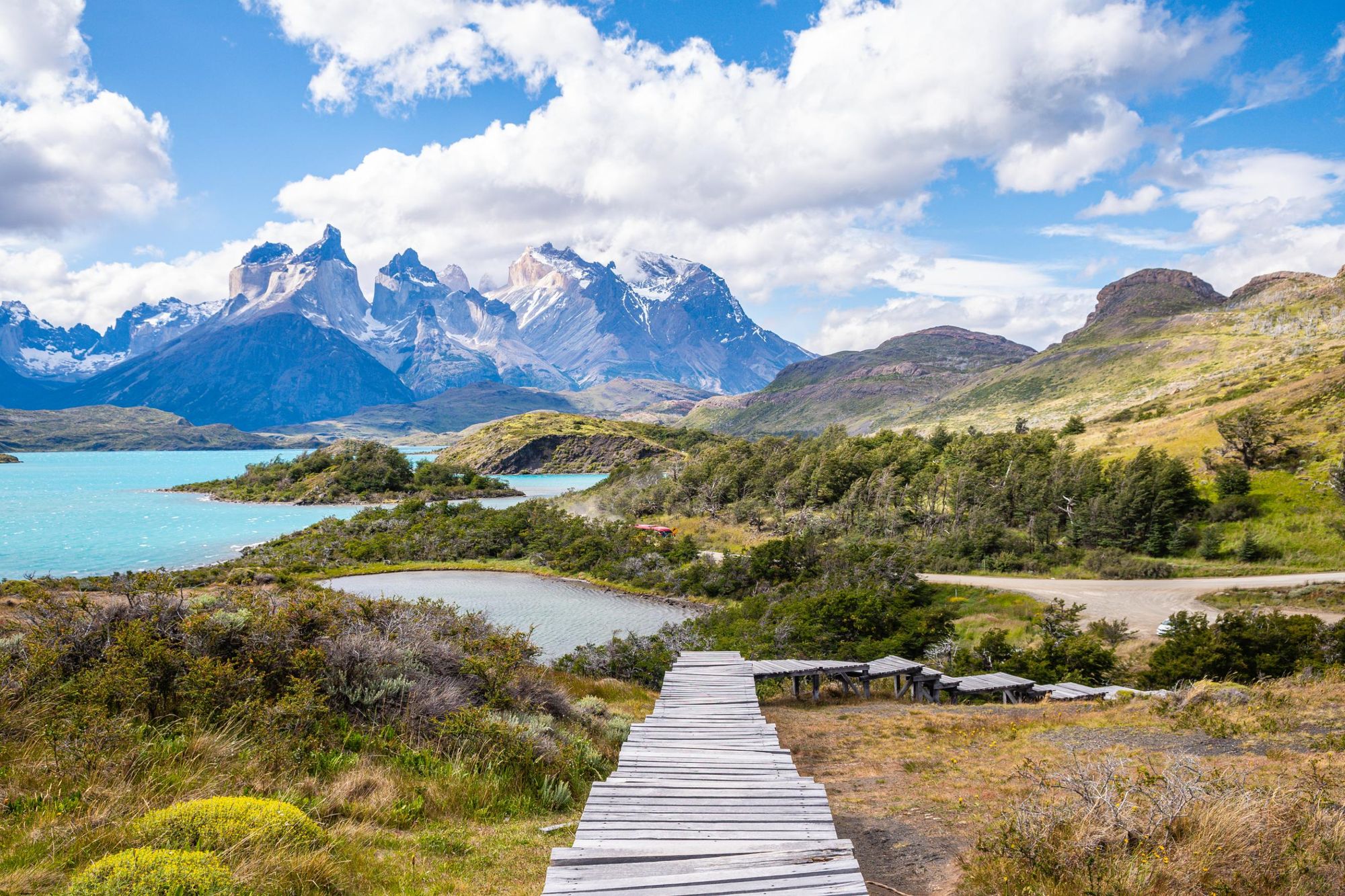
- Season: Summer
- Temperature: 18°C high, 5ºC low
- Time zone: GMT-3
- Currency: Chilean Peso
- Best for: Jaw-dropping mountains
The W Trek is one of the most famous hikes in the world. It’s the walkway which gives you the classic view of the famous, serrated mountains which have made Patagonia globally famous and oh so coveted by adventurers. Walk it and you can not only get up close with the towers of Paine themselves, you’ll also see the Serrano Glacier and the ice wall of Glacier Gray.
“Torres Del Paine is beautiful,” says guide Raffaele Di Biase. “It’s such an iconic destination.”
December is the start of high season in Chilean Patagonia, meaning the days are longer and the weather ideal for hiking, but it’s unlikely you’ll have the famous tracks to yourself. Go beyond the W Trek and you can discover the Valle Bader, with remote paths which are significantly less visited than the beaten trek, and give a sense of smallness, in a vast landscape.
How to get there? You’ll want to get to Puerto Natales, the gateway to Chilean Patagonia, to start your Torres del Paine adventure. You can fly to Puerto Natales from Santiago, although others fly into Punta Arenas, or get a boat in from Puerto Montt.
Trek Patagonia’s Torres del Paine | Much Better Adventures
Join a small group trekking adventure to the Torres del Paine massif, take a boat to Glacier Grey and hike to remote spots that few people ever see.
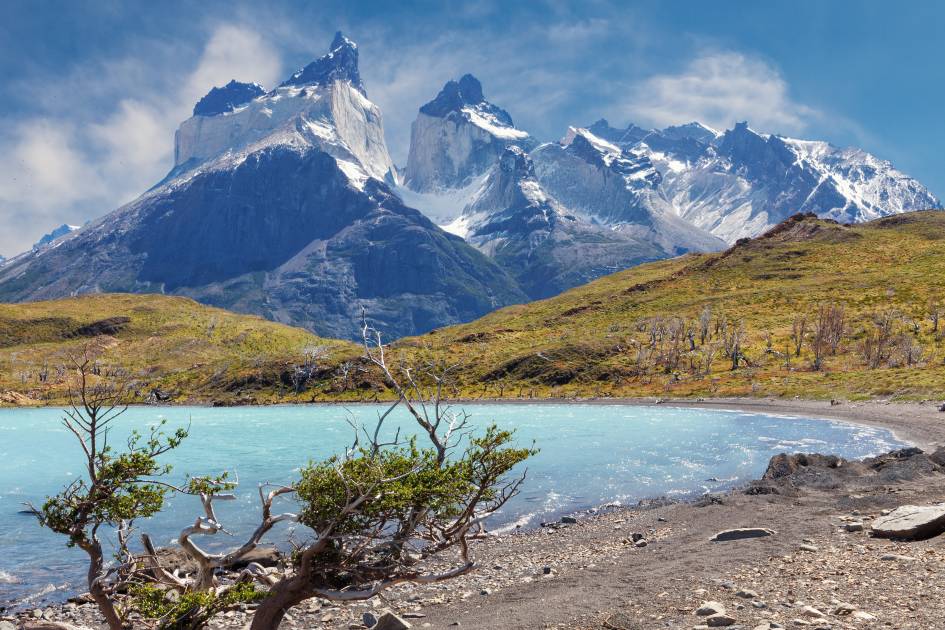
17. Sigiriya, Sri Lanka
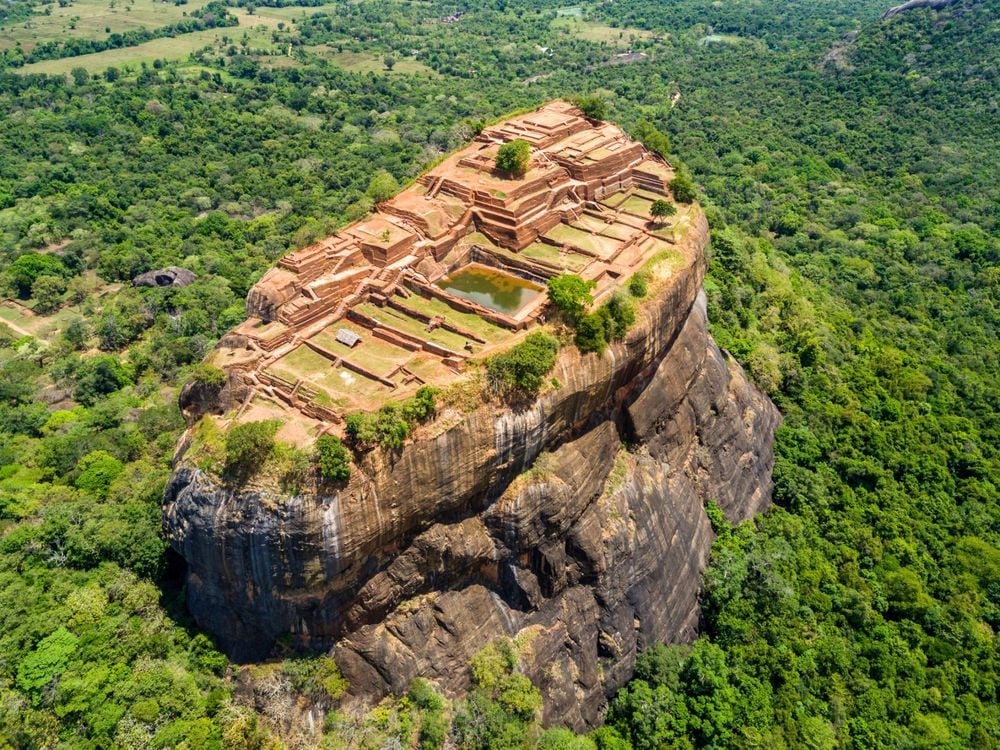
- Season: Dry season
- Temperature: 28°C high, 23ºC low
- Time zone: GMT+5:30
- Currency: Sri Lankan Rupee
- Best for: Combining nature and culture
Sri Lanka is a land of mountains, jungle and sublime wildlife, with leopards, loris’, elephants and various forms of primates all to be found amongst the bushy greenery.
Head to Sigiriya and you might see some of that wildlife on your way, but what you’re really there for was made (partly, at least) by human hands. Also known as Lion Rock, this ancient rock fortress is a huge lump of granite which cuts out of the green surrounding trees. The hill became a fortress in AD477, when King Kashyapa decided to make it his capital. He built a palace on top of the rock and decorated the sides of the palace with frescoes. All of this was abandoned after the King’s death, but the building was then used as a Buddhist monastery until the 14th century. Today it’s a UNESCO World Heritage Site, and it is truly breathtaking.
After visiting, head on to the pristine forest of Gal Oya, take the train to the tea hills of Nuwara Eliya, and chill out in eco-lodges and nature retreats, watching parrots fly amongst the trees.
How to get there? To get to Sri Lanka, fly to Bandaranaike International Airport.
The Ultimate Adventure Through Sri Lanka | Much Better Adventures
Join an active, small group trip to hike, cycle, surf and do yoga through Sri Lanka’s jungles, rural villages, wildlife reserves, and tropical beaches.
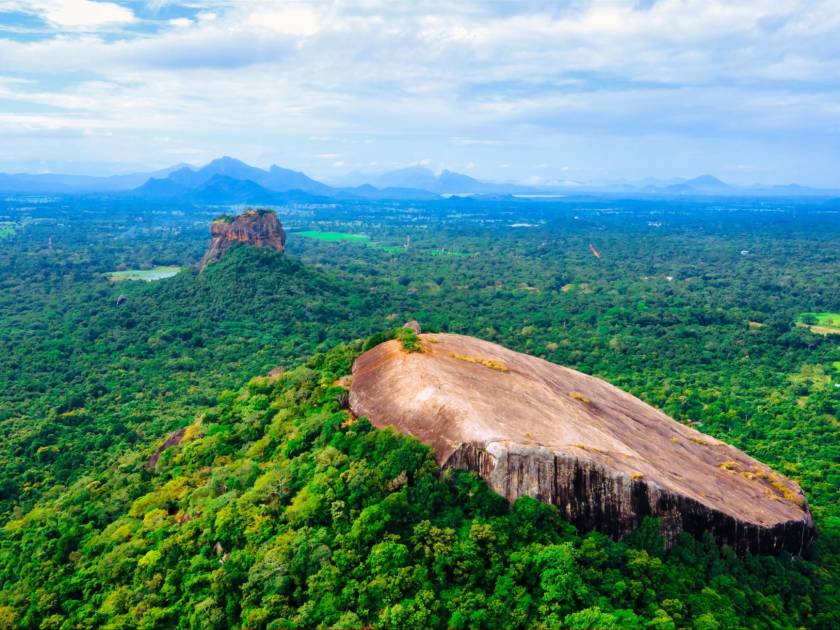
18. The Great Dahar Crossing, Tunisia
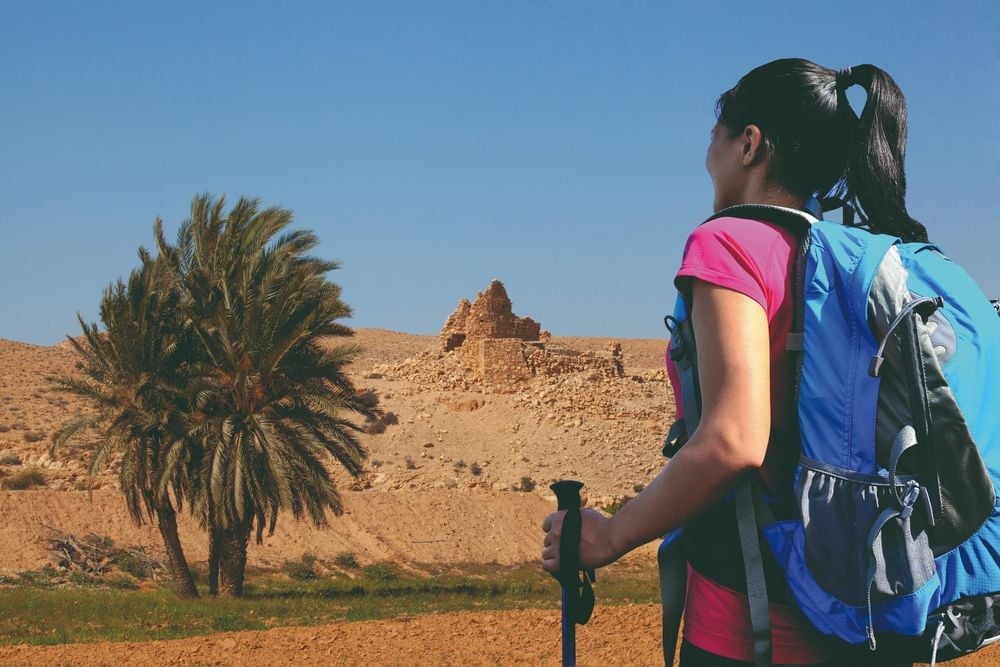
- Season: Dry season
- Temperature: 17°C high, 8ºC low
- Time zone: GMT+1
- Currency: Tunisian Dinar
- Best for: North African beauty and ideal perfect temperatures
Adventure in Tunisia can mean anything from exploring the dunes of the Sahara Desert to getting out to the green, forest-carpeted Kroumirie Mountains.
“The south is extremely exotic, even for us Tunisians in the big cities of the north,” says destination expert Ben Azouz Houssem. “It has oases, the Sahara Desert and the rocky mountains in the south east. The south is really very well adapted for adventure.”
If you’re a hiking fan, you’ll want to take a look at the Great Dahar Crossing, a 136.7 mile (220km) route which takes 12 days to walk and showcases the culture, history and beauty of the country – from the Berber village of Tamezret to the Ksour (old village) of Ghomrassen and the geological sites which are dotted around the Dahar mountains. Most famously, Tunisia stood in for the desert planet of Tatooine in Star Wars – so picture rocky, rugged, sandy terrain.
How to get there? Adventures in Tunisia often start at either Enfidha-Hammamet International Airport (particularly if flying in on a European airline), though the main airport is Tunis–Carthage International Airport, which is the airport of Tunis, the capital of Tunisia.
Cycle the Jordan Trail to Petra | Much Better Adventures
Pedal with local experts through desert landscapes on sections of the Jordan Bike Trail. You’ll pause at Petra, be wowed by Wadi Rum and float in the Dead Sea.
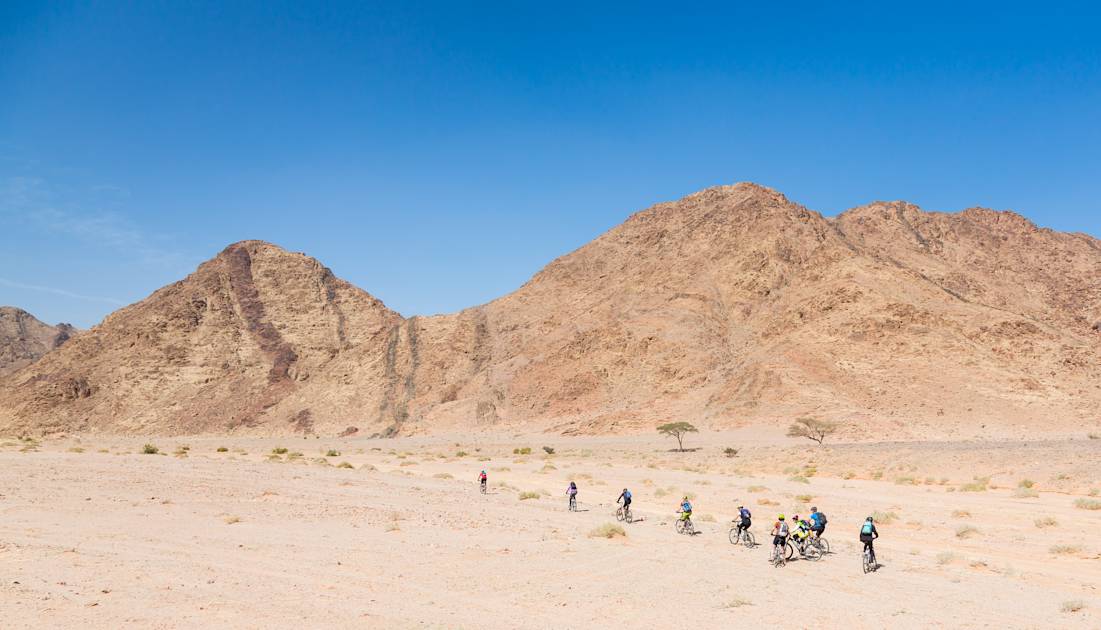
19. The Jordan Trail, Jordan
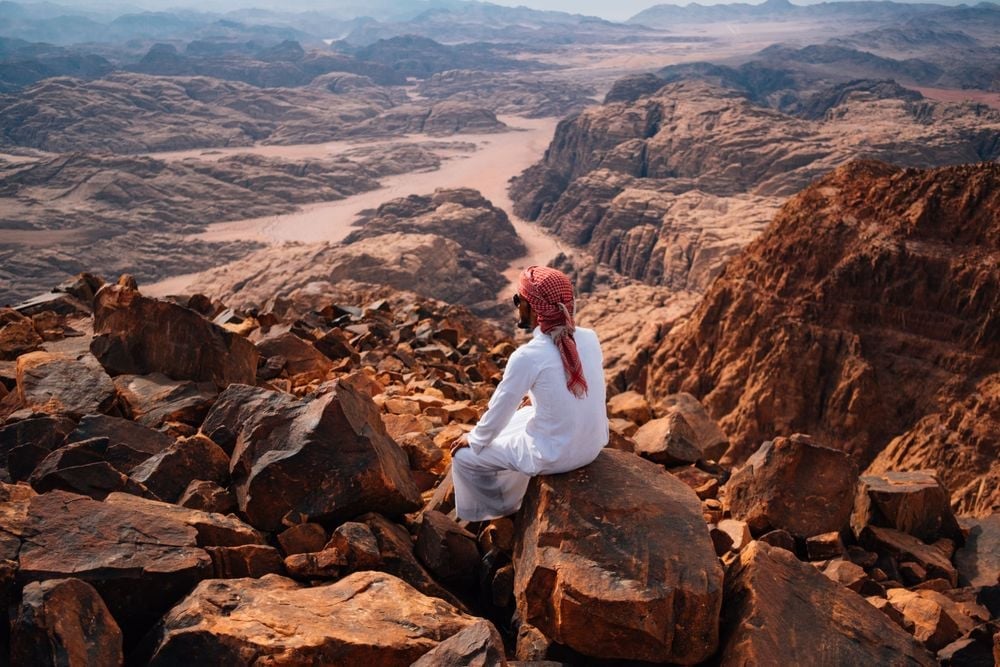
- Season: Winter
- Temperature: 13°C high, 3ºC low (for Petra)
- Time zone: GMT+3
- Currency: Jordanian Dinar
- Best for: Exploring an ancient site in a new way
The Jordan Trail runs 420 miles (675km) through the heart of Jordan, on a major route from Umm Qais in the north to the Red Sea in the south. It takes in the major sights like Petra and Wadi Rum, but also bringing tourists to other, less visited spots along the way.
“Some people who live just an hour away from Petra never get to see the benefit of the travellers who come through the area,” says Ayman Abd Alkareem, one of the founders.
In December, winter has truly arrived in Jordan, and so this is the off season. You can expect empty trails, and even sites like Petra to be a lot less busy. Temperatures may be on the chilly side, but the landscape remains beautiful, and the conditions, which most don’t associate with the sites of Jordan, give it a new colour. “These trails help to stretch the season,” says Ayman.
How to get there? The capital of Amman is where to fly to start your adventure in Jordan.
Cycle the Jordan Trail to Petra | Much Better Adventures
Pedal with local experts through desert landscapes on sections of the Jordan Bike Trail. You’ll pause at Petra, be wowed by Wadi Rum and float in the Dead Sea.

20. The Himalayas, Nepal
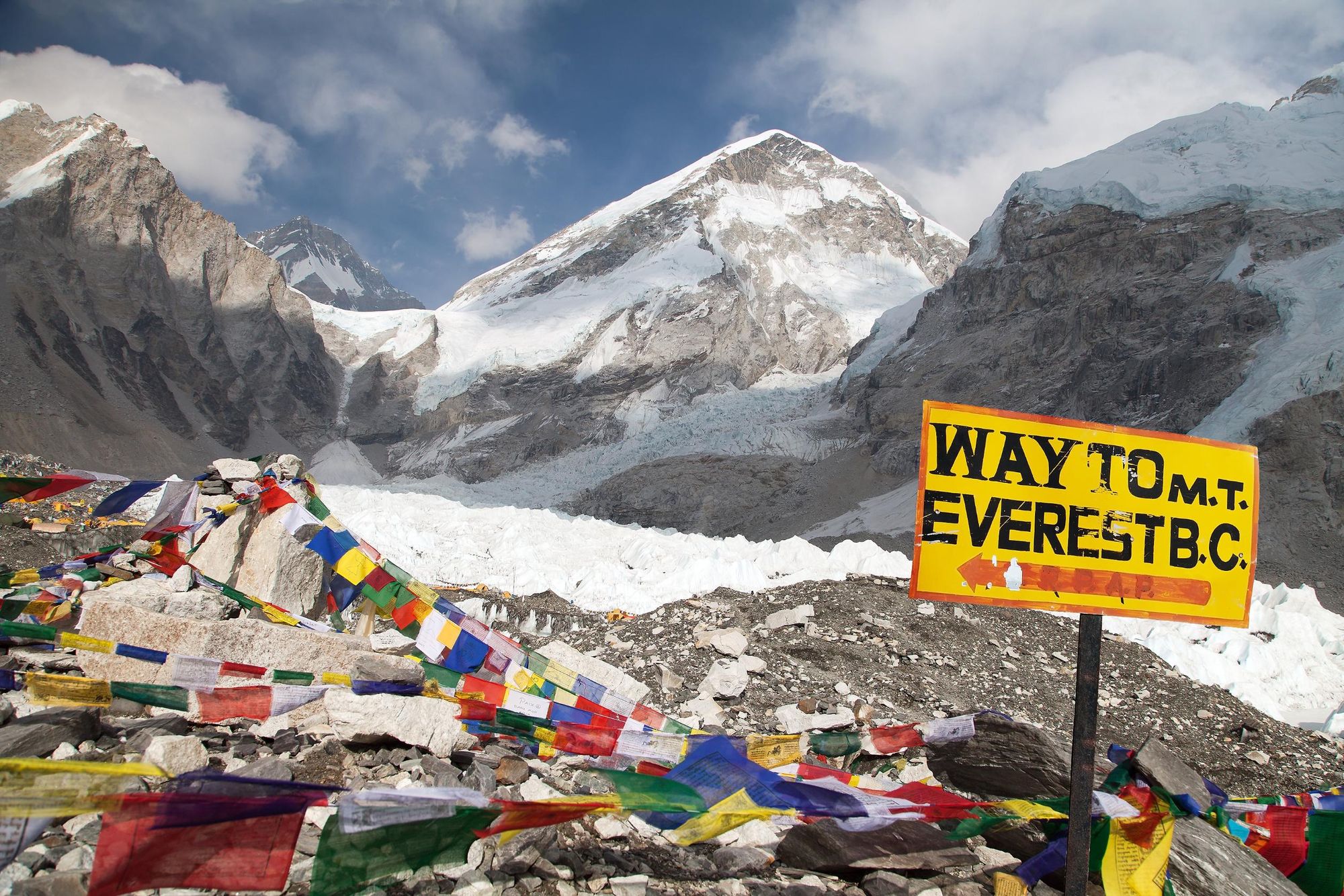
- Season: Winter
- Temperature: 5°C high, -16ºC low (for Lukla)
- Time zone: GMT+5:45
- Currency: Nepalese Rupee
- Best for: A full Himalayan experience
Nepal is home to the highest mountains in the world, including the mighty Mount Everest.
So, when you think about hiking in Nepal, you probably think about hiking to Everest Base Camp. That’s perfectly logical. Otherwise, perhaps you think of the Annapurna Circuit or if you’re looking to trek up a mountain, then the mighty Mera Peak, which will take you over 6,000m – and give you a real taster of what it’s like to be on top of the world.
In December, the weather is pleasant if chilly while hiking, and can get seriously cold at night. Of course, as you ascend to the higher reaches of the mountains, that chill will increase – but there’s nothing quite like the view of the Himalayas, and Everest, on a clear, crisp day.
How to get there? Fly to Kathmandu, then (if you’re going for Everest Base Camp) on to Tenzing-Hillary airport in Lukla. Even the name of the airport raises hairs.
Climb Mera Peak (6461m) | Much Better Adventures
Join expert climbing guides in the Himalayas to conquer the highest trekking peak in Nepal and bask in epic views of the world’s highest mountains.
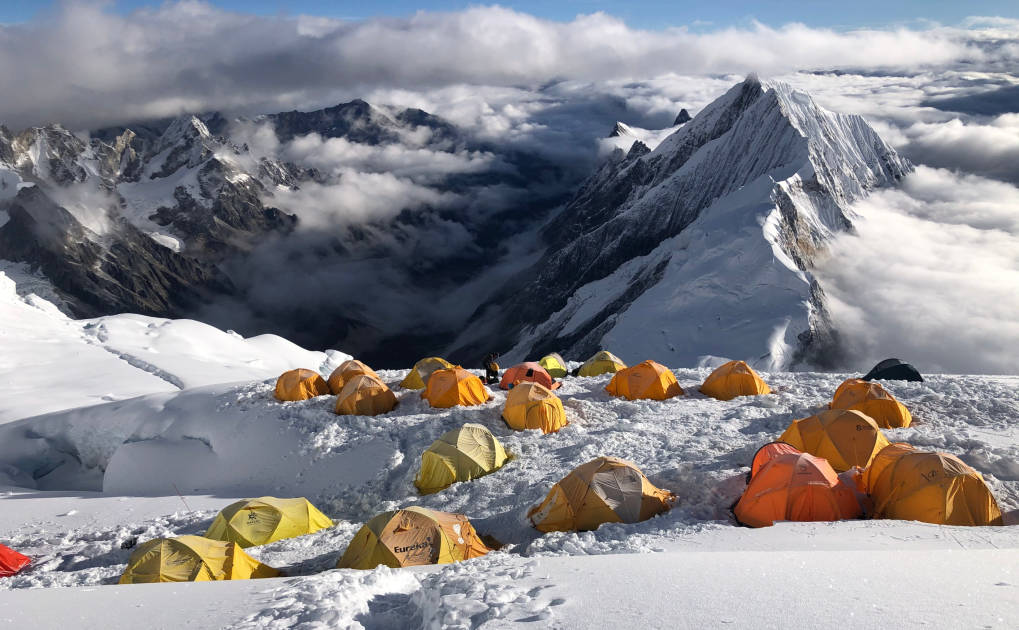
Inspired? Check out our full range of adventure holidays now!

